












In the age of online shopping, retail brand decision-makers must strike a balance between their immediate space requirements and long-term sustainability.
Reducing emissions, developing sustainable solutions, and leveraging renewable energy are among the steps that manufacturers can take to change the trajectory of climate change.

Today’s employees want to maintain their quality of life, including hybrid work, well-being support, and competitive pay; employers need to creatively meet their needs in order to keep them from jumping ship.


Manufacturers should prioritize accuracy in their load schedule, as there’s a downside to both underestimating and overestimating load requirements.
As company needs have evolved, many are gravitating to smaller urban areas that often provide them with a lower tax burden, affordable real estate, and development-ready sites.

28
The states considered the best locations for doing business according to an expert panel of location consultants are the highest performers in more than a dozen categories upon which companies make their site selection decisions.
Through its investment in infrastructure development, sitereadiness initiatives, transformation of its power sector, and workfocused immigration policies, FDI in Canada continues to grow at a healthy pace.
Through their ESG-oriented policies, Canada’s federal and provincial governments are working to position themselves as an attractive investment destination for businesses seeking sustainable long-term growth.
4 Editor’s Note Workforce Stats Paint a More Optimistic Picture, Although Challenges Remain
6 In Focus
Picking the Right Joint Venture Partners
8 Frontline Green Energy Companies Building a Qualified Workforce
10 Frontline Satisfying the Semiconductor Industry’s Workforce Needs
12 First Person Tom Schneberger, CEO, USA Rare Earth
72 Ad Index
“The world is reaching the tipping point beyond which climate change may become irreversible. If this happens, we risk denying present and future generations the right to a healthy and sustainable planet.”Kofi Annan (1938–2018)
Despite high inflation, U.S. labor force growth has been better than expected — with the workforce adding 187,000 jobs and unemployment decreasing to 3.5 percent in July 2023, according to the Bureau of Labor Statistics.1 Manufacturing construction also continues to surge. Since the beginning of 2022, construction spending on new factories has more than doubled, from an annualized rate of $91 billion in January 2022 to $189 billion in April 2023 — the biggest increase since data going back to 2002!2
So, while the Fed is still worrying about rising prices throwing the economy into a downturn, the positive statistics cited above paint a different picture. Companies are still expanding, and individuals are still employed and spending, with much of that spending still online post-pandemic, with the U.S. topping $1 trillion in e-commerce sales3 for the first time last year. This does, however, present a challenge for the businesses engaged in e-commerce as they compete for prime real estate on which to place distribution facilities, especially those covering the last mile. According to Matt Powers of JLL, in order to stay competitive, industry leaders must think ahead of challenges in space constraints, supply chain management, and more.
With low unemployment, industry leaders must also “think outside the box” when trying to satisfy their workforce needs. JLL’s Dianne Jones points to the shift in how people work brought about by the pandemic, encompassing employees’ desire for flexibility and a better work/life balance. Office workers want to keep their hybrid schedules that allowed for working at home at least some of the time. But even industrial workers who must be on site are demanding more flexible schedules or shifts. All companies should also have clear metrics in place for advancement, says Jones.
Thinking outside the box often involves finding workers whose skills can be transferrable to those a company requires if provided with the correct training. It’s for this reason — outstanding workforce development programs — among other factors, such as available real estate, cooperative state and local governments, and speed of permitting that growing firms continue to locate in the Southeast region of the U.S. Our 14th annual Top States for Doing Business survey of location consultants confirms this fact. Read more about the factors that landed the states on top in this issue.
Editor
1 https://www.bls.gov/news.release/pdf/empsit.pdf
2 https://finance.yahoo.com/news/a-factory-boom-is-finally-happening-190048801.html
3 https://www.digitalcommerce360.com/article/us-ecommerce-sales/
AREA DEVELOPMENT
Publisher Dennis J. Shea dshea@areadevelopment.com
Sydney Russell, Publisher 1965-1986
Business/Finance Assistant Barbara Olsen (ext. 225) olsen@areadevelopment.com finance@areadevelopment.com
Advertising/National Accounts advertising@areadevelopment.com
Editor Geraldine Gambale editor@areadevelopment.com

Staff and Contributing Editors
Lisa Bastian Mark Crawford
Dan Emerson
Steve Kaelble Mark Schantz Karen Thuermer
In-House Art & Design Circulation/Subscriptions circ@areadevelopment.com
Production Manager Jessica Whitebook jessica@areadevelopment.com
Business Development Manager Matthew Shea (ext. 231) mshea@areadevelopment.com
Digital Media Manager Justin Shea (ext. 220) jshea@areadevelopment.com
Web Designer
Carmela Emerson
Josh Bays Senior Partner site selection group
Marc Beauchamp Managing Director hickey canada
Brian Corde Managing Partner
atlas insight
Kate Crowley Principal baker tilly capital
Dennis Cuneo Director Site Selection Services
walbridge
Courtney Dunbar Site Selection & Economic Development Leader burns & mcdonnell
Brian Gallagher Vice President Corporate Development
graycor
Amy Gerber Executive Managing Director Business Incentives Practice
cushman & wakefield
Stephen Gray President & CEO
gray
David Hickey Managing Director hickey & associates
Scott Kupperman Founder kupperman location solutions
Bradley Migdal
Executive Managing Director Business Incentives Practice
cushman & wakefield
Matthew R. Powers Managing Director Brokerage jll
Alan Reeves Senior Managing Director Global Strategy Consulting newmark
Chris Schwinden Senior Vice President site selection group
Alexandra Segers General Manager tochi advisors llc
Eric Stavriotis Vice Chairman cbre
Steven Tozier US-East Region Credit & Incentives Leader ey
Halcyon Business Publications, Inc.
President Dennis J. Shea
Correspondence to: Area Development Magazine 30 Jericho Executive Plaza Suite 400 W Jericho, NY 11753 Phone: 516.338.0900
Toll Free: 800.735.2732
Fax: 516.338.0100
Chris Volney Senior Director Americas Consulting/Labor Analytics cbre
Dan White Director Government Consulting & Fiscal Policy Research moody’s analytics
Scott J. Ziance Partner vorys
in tennessee, you don’t have to look far for perfectly prepared sites. each site that bears our name is backed by the most rigorous set of site selection standards. when you consider your next project, look no further than tennessee.

survey of construction business owners, nearly 10 percent of respondents reported interest in pursuing joint ventures, while 39 percent of respondents listed “seek new markets” among their top priorities.1

to determine whether these are run-of-the-mill matters, simple misunderstandings, or may constitute something more sinister.
BY JOSEPH NATARELLI, National Construction Leader, MARCUM LLP
Thanks to government supported efforts to bring certain manufacturing capabilities to the U.S., construction firms specializing in industrial projects are in for a busy few years. That’s particularly true of firms with experience building data centers, microchip and computer component production facilities, and all kinds of clean energy infrastructure.
The only thing standing between businesses with relevant expertise and exponential growth may be
access to sufficient labor resources. In the wake of the pandemic, residential construction interests adopted a novel solution to overcome this same challenge — the joint venture. Here are three tips to keep in mind concerning joint ventures.
While backlogs remain strong in the short term, the longterm outlook for the residen-
With that in mind, industrial firms should recognize that they can add a lot of value as partners to contractors entering the industrial market. Those courted by commercial and residential contractors seeking partnerships should know their worth and keep in mind that they are in high demand as partners. With experience managing complex industrial projects, they’ll have a big advantage winning the major projects
Understand that you may be held responsible for any illicit activity associated with your joint venture, even if you aren’t aware of it. That’s why it’s extremely important to establish the bonafides of any partner before entering an agreement. Don’t sign with anyone until you’re satisfied the prospective partner has no history of participating in collusive bidding, material overcharging or substitution, questionable labor practices, ineffective supervision, or illegal payments.
tial and commercial sectors suggests their work may be drying up. In Marcum’s 2023
going out for bid over the next few years.
It goes without saying, but make sure you sufficiently vet anyone approaching you proposing a joint venture.
A legal database like Westlaw is a great source on any organization’s history in court. The Better Business Bureau and reviews on search sites like Yelp or Google can be equally revealing. Search databases by business name, owner/operator, and key officials to uncover complaints and cases involving the organization and key employees. Maintain an open dialogue
Entering a joint venture doesn’t change the day-today work but does require a lot of up-front preparation. Start the process by establishing a stand-alone entity created for a particular project. Get legal help forming the entity and formalizing the agreement. Having specialized help early could save you time and headaches down the road.
Industrial developers and construction firms stand to leverage their experience to engage partners and greatly expand their project capacity — but only if they’re sharp and prepared for the road ahead.
1 http://info.marcumllp. com/2023-marcum-nationalconstruction-survey?utm_ campaign=Construction%20 Survey&utm_ source=construction%20business%20 owner&utm_medium=article&utm_ content=construction_survey_2023
The only thing standing between businesses with relevant expertise and exponential growth may be access to sufficient labor resources.
Some of the best educated, most productive workers in the country live here. They send their children to America’s best public schools. And they’re a perfect fit for complex engineering challenges, like the space suits made for NASA at Collins Aerospace. Tomorrow is here in Connecticut. advancect.org

noted that “mutual interest” motivated the union and Ingeteam to work together on this effort. “It’s coming together quite well, and the plan is expanding” he told Area Development. They hope to train the first group of 15 applicants by the end of this year, and the state of Wisconsin is working on providing tuition grants to each trainee.
Standardized training will be provided by Milwaukee Area Technical College. With increased federal funding for green energy projects, Bruening says he hopes the program will eventually serve several dozen trainees. “We’ve been working on this for a couple years, and federal tax credits for turbine generators are creating more orders.”
In 2022, Danish-based offshore wind developer Ørsted signed a historic Project Labor Agreement (PLA) with North America’s Building Trades Unions (NABTU), the labor organization representing more than three million skilled craft professionals. The partnership is designed to transition U.S. union construction workers into the offshore wind industry in collaboration with the leadership of the U.S. NABTU affiliates and the AFL-CIO.
“The signing of this unprecedented agreement is historic for America’s workers and our energy future,” said Sean McGarvey, president of NABTU.2
BY DAN EMERSONHistorically, the working relationships between labor unions and employers have often been contentious and difficult. But some new partnerships between “green” energy companies and U.S. labor unions seem to be taking a more compatible approach.
In Milwaukee, Ingeteam, a Spanish-based manufacturer, which has been making wind turbine generators in the U.S. since 2010, announced a partnership with IBEW Local 2150, which represents 5,100 members in building transmission, utilities, and manufacturing.
Ingeteam’s Milwaukee plant is the only one in the U.S. that builds and repairs
wind turbine generators, according to the company. Last
October, Ingeteam asked the Local’s help in recruiting and training more workers, due to increased investment and deployment of turbines and greatly increased demand for repair services. The union worked with Ingeteam to start new apprenticeship programs focused on repair and assembly work.
Mike Bruening, the Local’s assistant business manager, says the plan is to create two, two-year apprenticeship programs, one for generator assembly technicians and one for repair technicians. He
In an interview with the U.S. Labor Department,1 Garan Chivinski, Ingeteam’s human resources manager, said “a new generation” of HR professionals is taking a different approach in dealing with labor unions. He said the company wants to serve as a model for other employers who want to be involved in the clean energy transition “in a way
puts workers
To anyone who is engaging with unions, especially for the first time, my biggest advice is to approach your conversations with an open heart and an open mind,” Chivinski said. “You might find a good partner who shares many of your goals.”
Ørsted said it has already committed $23 million for improved and new programming to train American workers for jobs in offshore wind. Ørsted operates America’s first offshore wind farm, Block Island Wind Farm in Rhode Island, and has the largest U.S. offshore wind energy portfolio. With its joint venture arrangements, Ørsted has six offshore wind projects in development on the Atlantic Coast, which will generate about 5GW, enough to power more than two million homes.3
1 https://blog.dol.gov/2023/04/26/ how-ingeteam-and-ibew-areadvancing-the-clean-energytransition-together
2 https://www.nycclc.org/news/202205/nabtu-orsted-sign-historicproject-labor-agreement-usoffshore-wind
3 https://www.oedigital.com/ news/496331-u-s-union-workers-tobuild-rsted-s-u-s-offshore-wind-farms

“A new generation” of HR professionals is taking a different approach in dealing with labor unions.Labor unions and the offshore wind energy industry are working together to advance the transition to clean energy.
A whole new business perspective.

# 1
Tech Workforce Growth

Technology Councils of North America

# 1
Most Diverse (East Coast)
U.S. Census Diversity Index

Maryland. See what’s here. And why it’s time to add it to the shortlist.


A highly-educated workforce. Ground-breaking innovation hubs in life sciences, cybersecurity and aerospace. And, a quality of life that makes employees feel right at home. See why businesses are starting up or relocating here, here!










Business.Maryland.gov/here

 BY DAN EMERSON
BY DAN EMERSON
In July, chipmaker Taiwan Semiconductor (TSMC) announced it was postponing the start of production at its new factory in Arizona. The firm says chip manufacturing will no longer start next year, due to a shortage of skilled workers.
The announcement came at a crucial time for the U.S. semiconductor industry. In August 2022, President Biden signed into law the CHIPS and Science Act, which will provide about $280 billion in new funding over the next decade to help grow domestic research and manufacturing of semiconductors.
A number of chipmakers have responded by announcing plans to build new plants. Along with the Arizona plant, those include Samsung’s plans for a $17 billion facility near Austin, Texas, and Intel’s groundbreaking for the first of two large fabrication plants worth $20 billion in Ohio. Intel is one of the few companies producing all of its silicon chips in the U.S.
Right now, the industry’s biggest problem may be finding enough skilled engineers and technicians to staff those plants. As U.S. manufacturers’ share of the world’s computer chips has dropped to just 12 percent, educational programs have followed a similar direction. But efforts to power
up the labor supply have been ramping up, nationally. Universities and colleges have been updating their semiconductor-related curricula and forming partnerships with industry and other educators to remedy the shortfall.
There were around 20,000 job openings in the semiconductor industry at the end of 2022, according to Peter Bermel, an electrical and computer engineering professor at Purdue University. “The workforce needs of the semiconductor industry are going to evolve quite
in their products. He notes that the rapidly developing artificial intelligence sector “will heavily impact the semiconductor labor market, and drive labor toward less absolute number of workers, but better-educated workers who understand the big picture and understand all of the different parts” of manufacturing processes.
Bermel is director of the Scalable Asymmetric Lifecycle Engagement Microelectronics Workforce Development program (SCALE), a $19.2 million multi-university public/private/academic partnership intended to foster work force development across engineering universi-
and the University of Central Florida.
“We’re working on reviewing curriculum,” to make sure it is current and relevant to developing scientific knowledge, she says. “We hire a lot of graduates from the U of M material science and chemical engineering program, and we partner locally with technical schools. There is a great need for technical talent within equipment and facilities maintenance,” she adds.
According to Johnson, SkyWater, founded in 2017, continues to see rapid growth in its custom chip manufacturing business and is approaching 800 employees in the Minneapolis area, and another 60 at its Florida location. It currently has about 85 unfilled positions, from entry-level to leadership levels.
quickly, with the industry just beginning to be aware of the future needs, and developing students,” Bermel says. “Universities have to be part of the solution; a lot of workers need specialized (industry) knowledge. Even trade schools and community colleges need support and guidance from research universities, which is why we’re working with them on workforce development.”
Bermel says there is a developing cluster near Purdue of companies involved in the semiconductor industry and those that use them
ties in the U.S. It includes a partnership of 19 universities, 17 government agencies, and 31 industrial defensebased companies to ensure that workforce needs are being met.
One of the companies partnering with Purdue is Minneapolis-based SkyWater Technology. Sara Johnson, director of talent acquisition for SkyWater, says the company also has training partnerships with several other universities and technical schools, including the University of Minnesota College of Science and Engineering
“The fact is that, in order for the industry to thrive, we are going to need about 250,000 new employees in the next five years, including about 50,000 engineers,” Johnson says.
Meeting that need will require a “holistic” approach, she says, and create programs focused on K–12, all the way up to university and post-graduate individuals.
SkyWater offers “immersive” learning experience to high school and collegelevel interns. It also partners with organizations that help veterans make the transition out of the military.
There were around 20,000 job openings in the semiconductor industry at the end of 2022.As the semiconductor industry announces plans to grow domestic production, it is facing a workforce shortage.

Establishing a domestic supply of rare earth elements in the United States or among our allies is therefore crucial for ensuring the security and resilience of our economy and national defense. We can mitigate the risks of supply chain disruptions, price volatility, and unfair trade practices by reducing our dependence on China.
This past April, The Rare Earth Magnet Manufacturing Production Tax Credit Act was reintroduced as a bipartisan bill to Congress. If the Act becomes law, how would its tax incentives support U.S.based magnet and metal production?
SCHNEBERGER, CEO, USA RARE EARTH
What are rare earth permanent magnets? How are they made?
Schneberger: Rare earth magnets are strong magnets that maintain their magnetic properties indefinitely. These magnets are typically used to turn electricity into motion. They are manufactured from a few naturally occurring rare earth elements that are readily found, but difficult to manufacture cost effectively.
What are some important products manufactured with these magnets? What industries do they represent?
Schneberger: Rare earth magnets are critical to make electric vehicle motors, wind turbines, and the many small motors used in robotics and electronics. The unique magnetic properties of rare earth magnets also are vital to other applications such as military guidance systems and medical devices. One way or another, this type of magnet is a part of our day-to-day lives while the military depends on them to protect our way of life.
I understand most of these magnets are not made domestically. How does that impact our nation’s economy or national security interests?
Schneberger: Currently, over 90 percent of rare earth magnets are produced in China, and nearly all of the balance is produced in Japan. This massive concentration of manufacturing in one country leaves us vulnerable to geopolitical tensions and creates excessive supply chain disruption risk.
Schneberger: This Act1 is a step in the right direction for our industry by creating a domestic supply of these elements. It would create a production tax credit for rare earth magnets manufactured in the United States; presently, no domestic manufacturer of such magnets exists. These magnets are critical for clean energy projects and used in a wide variety of applications necessary for our modern economy. This effort by the federal government will help domestic companies compete with the existing production in China, which is operating at a larger scale and receiving support from the Chinese government in many forms.
How is USA Rare Earth (USARE) helping jumpstart domestic rare earth magnet manufacturing?
Schneberger: Although we’re not the only American company operating in this industry, we’re definitely one of its key players. USARE’s mission is to create a fully integrated, U.S.based “mine-to-magnet” critical mineral supply chain with no dependence on China. Our operations are in Oklahoma (rare earth magnet production starts next year), and Texas (rare earth oxide production begins in a couple of years). Both states will benefit from high-paying jobs and collaboration to innovate new products associated with those operations.
What is the estimated economic impact of a robust U.S.-based supply chain of such magnets? Will this be a growth sector?
Schneberger: The transition to electric vehicles, keeping Western companies competitive via the use of computing and robotics, using the personal devices we’ve become reliant on, and our national security are all dependent on developing a more
TOMdiversified supply chain. Even if all announced magnet production to date is brought online, we estimate that demand outside of China will still exceed supply outside of China by more than 40 percent by 2030. For this reason, it is of the utmost importance that we all work together to increase our supply capability in Western regions.

I believe America was the world’s leading producer of rare earth elements until the 1980s, when stricter environmental laws negatively affected this U.S. mining industry. What safeguards are in place today to protect our citizens’ health and environment when magnet production is restarted here?
Schneberger: The production of rare earths can be done in an environmentally friendly manner. Our process utilizes continuous ion exchange technology instead of the traditional solvent extraction process. This allows for a significant improvement in the environmental profile of our operation.
Schneberger: We appreciate the interest and look forward to opportunities to provide more information to your readers. We are going through a fundamental transition of how we store and use energy. This transition will create significant opportunity and change both in the U.S. and worldwide. Ensuring reliable supply chains for the critical materials we need, such as rare earth magnets, is fundamental to the United States’ maintaining a healthy economy for future generations.
Rare earth magnets are critical to keeping America’s economy strong and protecting our way of life. With this in mind, Area Development’s staff editor Lisa Bastian asked Tom Schneberger, CEO of USA Rare Earth, to share his perspective on this issue.
1 https://swalwell.house.gov/media-center/press-releases/swalwelland-reschenthaler-introduce-bill-incentivize-american-made
Reducing emissions, developing sustainable solutions, and leveraging renewable energy are among the steps that manufacturers can take to change the trajectory of climate change.
 By Jennifer Dodson, Director, Global Customer Sustainability, PPG
By Jennifer Dodson, Director, Global Customer Sustainability, PPG
In an era defined by extreme weather conditions that are causing unprecedented environmental challenges, it is important for manufacturing companies to recognize their responsibility to mitigate the broader impacts of climate change. As the world grapples with the consequences of rising temperatures, extreme weather events, and ecological degradation, businesses must rise to the occasion and prioritize sustainability as a strategic business imperative. By committing to science-based emissions reduction targets, working collaboratively across the value chain, and taking a proactive role in mitigating climate impacts through sustainable products and processes, we can create a brighter tomorrow for current and future generations.
Business leaders must take immediate action to slow the trajectory of climate change. Committing to science-based emissions reduction targets is a pivotal step in this journey. Such targets ensure that companies align their actions with established climate science data to define and transparently report against their decarbonization strategy.
By integrating these targets into their business strategies, companies can encourage the development and use of low-carbon technologies and foster accountability across the value chain. These types of public commitments send a clear message that companies are determined to take clear, measurable action.
By improving the durability of assets, the coatings industry plays an important role in extending product lifecycles, while preserving resources for generations to come. Coatings manufacturers must leverage this as a strategic advantage and prioritize the continued development of industryleading sustainable solutions to meet the needs of customers in the building industry.
First and foremost, it’s important for manufacturers to leverage recycled content, biogenic or chemical recycled content. By placing emphasis on circularity and reusing and recycling, we can significantly reduce environmental impacts, and offer sustainably advantaged solutions to customers, ultimately supporting their sustainability efforts.
Secondly, building developers are often required to meet green building standards — and paints and coatings can play a vital part in supporting this goal. Coatings are used extensively in the building and construction market for protective and decorative purposes on the building itself and as part of components or machinery installed in the building.
It is pivotal to take a multi-faceted approach to sustainability and product stewardship. At PPG, we developed a comprehensive and multi-variable methodology, which was informed by the World Business Council for Sustainable Development (WBCSD) and further tailored to meet our specific value chain demands. The assessment methodology includes the introduction of
Kentucky has set a new, higher standard. With our certified Build-Ready sites, we have drastically shortened the time needed to plan and begin construction. With a Build-Ready site, a company is guaranteed that:
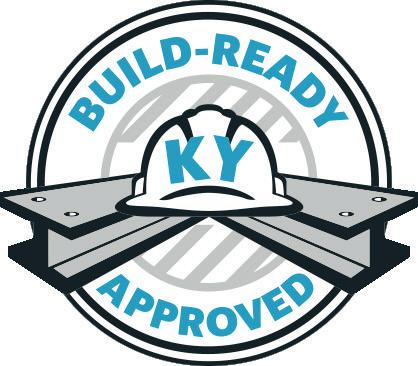

•A building pad is ready
•Zoning is in place
•Environmental issues have been resolved
•Infrastructure plans are set
•Construction costs and timetables have been estimated
•Funding plans have been developed, with sale and lease options
•Building renderings are available
https://cedky.com/r/gold_shovel @cedkygov


the United Nations Sustainable Development Goals (UNSDGs) and industry best practices, to designate which of our product lines are sustainably advantaged.
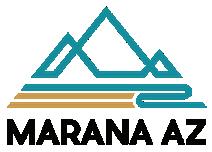
Equally as important, building material manufacturers must leverage data to produce declarations that support the requirements of green building schemes. These include the U.S. Green Building Council’s Leadership in Energy and Environmental Design (LEED®) certification, and the WELL BUILDING STANDARD® certification.



In addition, life cycle assessments enable the development of environmental product declarations (EPDs), which declare the environmental impact of the product over its life cycle. To support LEED material reporting, it is important for manufacturers to gener-





ate health product declarations (HPDs), which outline the substances present and indicate the results of screening these substances against the HPD priority hazard lists and the GREENSCREEN FOR SAFER CHEMICALS® designation.
As well as supporting the requirements of green construction schemes, assessments and certifications enable users to make informed choices on the products they choose in relation to the chemicals used, the impact on indoor air quality, and the broader environmental impact.
Beyond product offerings for customers, it is essential to leverage a strong renewable energy strategy to ac-
By improving the durability of assets, the coatings industry plays an important role in extending product lifecycles, while preserving resources for generations to come.
celerate the reduction of carbon emissions within your own operations. Companies should seize the opportunity to lower their carbon footprint and reap long-term benefits. By investing in renewable energy solutions, implementing energy efficient projects, and engaging the right partners, we can enhance operational excellence and reduce emissions across the value chain. Taking advantage of clean energy offerings is a powerful way for business leaders to reshape the trajectory of climate change.
Every touchpoint along the value chain has a responsibility to support a more sustainable future. Climate change poses systemic risks that affect communities, ecosystems, and economies on a global scale. The global paints and coatings industry should continually seek to use resources more efficiently and develop value-added sustainable solutions to support customers’ sustainability objectives. The coatings industry is critical in contributing to building a better future for customers, suppliers, and communities.
To address these challenges, companies must
prioritize sustainability as a driver of their overarching corporate strategy and engage their workforce to support the journey. Beyond involving employees as allies, business leaders should collaborate with local communities and governments to support climate resilience efforts. This can involve investing in research and development for sustainable solutions, funding infrastructure improvements, supporting educational programming that helps grow the next-generation workforce, and advocating for policies that prioritize climate action. By assuming a proactive role, companies can make a meaningful, measurable impact.
The urgency of addressing climate change cannot be overstated. Business leaders must do more to change the trajectory of climate change by committing to science-based emissions reduction targets, investing in clean energy solutions, implementing energy-efficient projects, and mitigating the broader impacts of climate change. By heeding these calls to action, companies can become agents of change and pave the way toward a sustainable and prosperous future for all. Together, we can rise to the challenge and reshape the course of our planet’s destiny.

With resources like low-cost, reliable power, creative incentive packages and a wide-ranging property portfolio, Santee Cooper helps South Carolina shatter the standard for business growth.
In fact, since 1988, Santee Cooper has worked with the state’s electric cooperatives and other economic development entities to generate more than $22 billion in capital investment and helped bring more than 89,000 new jobs to our state. It’s how we’re driving Brighter Tomorrows, Today

In the age of online shopping, retail brand decision-makers must strike a balance between their immediate space requirements and long-term sustainability.
By Matt Powers, Executive Managing Director, Retail/E-Commerce Distribution, JLLThe surge in online shopping observed in the past three years, as the world adapted to changes in consumer behavior spurred by the pandemic, has had a revolutionary impact on the retail landscape. Simultaneously, business owners face a daunting challenge: How can we meet the increasing demand of customers while protecting our market share from competition?
This growing pressure, coupled with rising expenses and inventory struggles plaguing many verticals, is cause for pause. While some in the industry may celebrate a leading market, such as the U.S. topping $1 trillion in e-commerce sales1 for the first time last year, now more than ever before, the smartest players are developing innovative strategies to fuel all aspects of their operations. Today, to stay competitive, industry leaders must think ahead of challenges in space constraints, supply chain management, and more. Four focal areas for e-commerce-focused retailers are explored below.
As fiercely competitive price wars and customer acquisition competition play out online in the e-commerce arena, physical space is a fast-growing battleground among the major players. Fortune 500 companies and powerhouses are vying for prime real estate to place distribution facilities or last-mile locations. According to JLL’s Q1 Industrial Outlook,2 this has led to an increase in industrial rental rates and annual escalations, particularly in densely populated regions, such as New York, Chicago, and Los Angeles, where opportunities for growth are limited.
Higher costs, scarcity in available inventory, and the intense competition among mega-site users have a ripple effect — and one that is particularly adverse — on second- and third-tier retailers, who may struggle to achieve a sufficient return on investment (ROI) in this challenging environment. As a result, these retailers find themselves caught chasing profit margins to offset securing space at a higher cost or sacrificing market share if they stand pat with a current footprint. Add the economic climate and rising interest rates to the equation, and many second- and third-tier players are erring on the side of caution and adopting a holding pattern.
According to JLL’s Industrial Tenant Demand Study,3 secondary markets are exploding in popularity as attractive alternatives for e-commerce providers and retailers. Nontraditional areas like Little Rock, Arkansas, and Pensacola, Florida, have witnessed a growing need for “last-mile” e-commerce to meet the increased demand from consumers for fast shipping. These markets come with their own set of challenges, which may include inefficient infrastructure and construction delays as they’re removed from major metropolitan areas.
There is also an increased focus on Sunbelt markets, such as Atlanta, Georgia; Orlando, Florida; Phoenix, Arizona; and even Dallas, Texas, as opportunities for expansion due to land availability and explosive population growth.
Additionally, the Southeast region was the top market for de-
To stay competitive, industry leaders must think ahead of challenges in space constraints, supply chain management, and more.
mand in 2022, accounting for 240 million square feet in requirements. Specifically, Savannah, Georgia, and Charlotte, North Carolina, have emerged as top markets due to their prime geographical locations and growing populations.
These markets are expected to remain bright spots in the industrial market as e-commerce brands prioritize the availability of space, cost-effectiveness, and the ability to deliver workplaces that can have staffing needs met by the nearby labor pool.
The impact of construction slowdowns or halts is likely to result in a shortage of industrial deliveries in the near future. Many companies had a strategy for building out their e-commerce infrastructure spanning a decade or more. However, the pandemic disrupted even the bestlaid plans and continues to have lasting ripple effects.
During the initial stages of the pandemic, there was a surge in customer demand, leading to a rapid acceleration in network optimization efforts. However, as the demand has slowed down and the economy faces strains, these networks remain incomplete, and, in some cases, they have become even more inefficient than before, resulting in a patchwork network for many retailers. In response to these challenges, retailers turned to thirdparty logistics providers (3PLs) as a temporary solution to alleviate the strain on their operations.
Improving building efficiency, maximizing sales space, and streamlining operations are key business fundamentals for e-commerce retailers. Now, many companies have come to the realization that they must take control of their destiny rather than relying solely on 3PLs. The pandemic shifted the focus from a “justin-time” mentality to a “just-in-case” approach, and now the industry is seeking an equilibrium that emphasizes the need for diversified supplier bases and regionalized networks to meet global demand.
Having the right real estate, suppliers, fulfillment facilities, and stores — and constantly evaluating if the mix of locations is being used in an optimal way — is central to driving the efficiency of supply chains.
Consumers’ expectations of near-immediate click-to-door delivery have made the proximity of fulfillment centers to customers’ homes of the utmost importance. Retailers are rapidly exploring solutions to the issue, including repurposing existing buildings such as vacant malls, parking lots, and old retail stores. Movie theaters, in
particular, due to their size, have been transformed into distribution centers due to their proximity to major population centers.
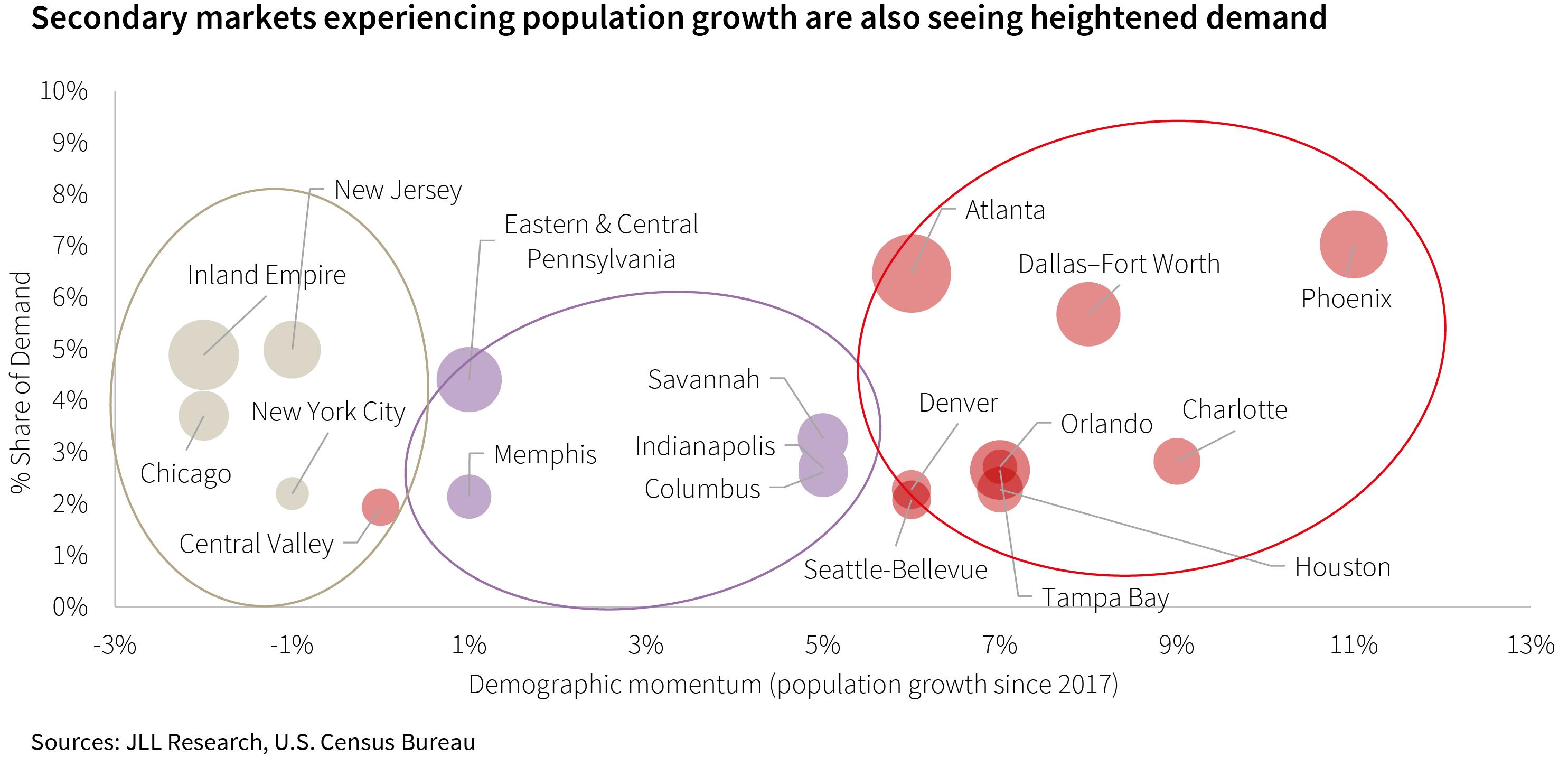
In densely populated areas, where the construction of a 50,000-square-foot building is not feasible, the conversation around the conversion of aging and vacant office spaces into vertical service distribution centers is gaining momentum.
While both approaches offer advantages, they also present challenges, such as limited dock doors, floor slab concerns, zoning issues, and potential political opposition. To encourage more conversions, increased investments from landlords and tenants, along with community understanding and support, are vital. By addressing these challenges, retailers can better serve their customers and solve the “last-mile problem.”
A comprehensive strategy that strikes a balance between immediate space requirements and long-term sustainability should be top of mind for any e-commerce and retail brand decision-makers. Retailers must invest in innovative technologies, foster collaborations, and maintain open lines of communication to adapt to the evolving landscape.
The best are embracing creativity in their real estate holdings while continuing to take a customer-centric approach in the age of online shopping. Ultimately, the battlefield may be intense but, with the right strategies and resources, retail can thrive.
1 https://www.census.gov/retail/index.html
2 https://www.us.jll.com/en/trends-and-insights/research/industrial-marketstatistics-trends
3 https://www.us.jll.com/en/trends-and-insights/research/industrial-tenantdemand-study
Secondary markets are exploding in popularity as attractive alternatives for e-commerce providers and retailers.











Today’s employees want to maintain their quality of life, including hybrid work, well-being support, and competitive pay; employers need to creatively meet their needs in order to keep them from jumping ship.
By Dianne Jones, Managing Director, Business and Economic Incentives, JLLCreative” and “Workforce” are not words that have historically gone together. Fast forward to 2023, and they go together like peanut butter and jelly!
But why are we having to be creative with the workforce? What does it mean to be creative with your workforce, and how can your creativity set you up for success within your industry? Also, while we are having a hard conversation, let’s talk about Gen Z and how they play a role in all of this.
What we can see from the statistics is clear: the babyboomers are retiring in droves. According to Pew Research Center,1 the rate of retirement for baby-boomers has accelerated. Nearly 29 million boomers retired in 2020, and three million the year before that. By 2030, 75 million boomers are expected to retire. That translates to about 10,000 workers per day.
While this trend is not new or unexpected, the pandemic did escalate the rates of retirement, putting a major strain on the labor force participation rate. Currently, the U.S. labor force participation rate is the worst it has been since 1964, despite job openings being at an historical high in March of 2022. While there has been a shift in the number of people available to work, there has also been a shift in how people work — 2020 forced the “ability” to be flexible, by working from home or the need for one parent to stay at home as opposed to prepandemic dual-income households.
Regardless of how we got here, we must deal with where we are and understand the differences between expectations of employers and employees. Conversations with our clients tell us that employees view productivity as completing their required task. Employers view productivity as innovation and new ideas generated by

the organization. This is a sharp disconnect.
JLL’s 2022 workforce report2 shows that employees renewed their focus on maintaining their quality of life, including hybrid work, well-being support, and competitive pay. Seventy-four percent of employees who have been working remotely three to four days a week were the least loyal and have left their jobs in the past 2.5 years, and 79 percent could do so in the coming months. This statistic is not shocking when you think about the limited connectivity and camraderie of remote work. The statistics go on to show that 59 percent of employees prioritize working in a company that supports their health and well-being, while 60 percent of employees believe the office will remain central to their working life in the long term.
Let’s break down the workforce discussion by two different sectors: office and industrial. We know the ability to allow flexibility is much easier with employees in an office setting as opposed to those on a manufacturing floor, but that doesn’t change the desire of those workers to have flexibility.
Wisconsin loves to help all sorts of companies find their version of success. That includes yours. From site selection through construction, opening and expansion, we provide support to ensure your vision becomes reality. After all, your success may inspire other companies to relocate or expand here, too. That’s how we look forward.

When we look at the office attendance numbers, JLL research reports that about 46 percent of the employees are having some sort of in-office attendance numbers. When we look at other key lifestyle indicators, the “attendance” is in the 90th percentile! These are things like gym attendance, air travel, restaurant reservations, and hotel bookings. So, what do all these numbers mean for the office sector? For starters, if your company’s inoffice attendance policy conflicts with some amount of flexible work, you may be seeing high turnover. Finding a happy medium of providing flexibility while still providing required days in the office can be a win-win. If your boomers and Gen Xers want to come in everyday, they should have a space to do that and be welcomed with open arms. If your millennials and Gen Zers want more flexibility, you need to allow for that as well.
The industry’s leading best practices conference events for economic developers
Speaking about Gen Z, they have been watching and listening and are going to do things differently, and I think we all owe them a huge “Thank you.” This generation has a focus on the things that go past the office. They are making the dash on their headstones count, and their legacy won’t be the job they had — but the places they went. After watching many of their parents work day-in and day-out until they were too old to enjoy retirement, they are making some changes — working smarter not harder, making their health a top priority, and taking mental health as seriously as it should be taken.
If you want to create a positive environment for all employees and make your Gen Z employees the happiest, you must focus on the employee experience. Incentivize the drive! What are they coming to an office for? The culture, a diverse environment, transparency between positions and pay, a place to have their voice heard, and some natural light. Yes, they also want good snacks, a sparkling water machine, and a barista-like coffee machine as well. Lunch a few times a month would be icing on the cake! But, they also want access to both a physical fitness center and access to mental healthcare. If you don’t have exercise facilities in your building, provide an allowance for gym memberships. Confirm your insurance provider has easily accessible telehealth options for mental health, and if they do not, add on a separate service that provides this and encourage your employees to use it. The mental struggle of this generation and those to follow is real. You can blame it on the pressures of Instagram, Snapchat, Tick Tock, Threads, or X, and we as leaders need to help change the narrative. Everyone has some type of mental struggle. It may not be every day, but it is real, and it is okay. In short, success in your corporate office environment means leaning into making your environment one where people want to be and feel good about being.

Regardless of the sector in which your employees work, there is a new urgency to understand the progression of where they are and where they are going. Having clear metrics in place for advancement make it easier on both parties for promotions. If an employee knows in year three that there is the ability for a promotion if they do X, Y and Z, they will think twice about jumping ship at the 18-month mark.
The industrial workforce has grown significantly over the past few years and, as the EV revolution continues, will continue to grow. Hiring and retaining workers is harder than ever. Their skills are often transferable, and the company across the street may be paying $0.25 more an hour than you are. So how do you compete with that?
Like those in the office sector, the industrial workforce wants flexibility. While there is an expectation that work happens on the manufacturing floor, being flexible with when the work happens is a new trend in manufacturing. With HR teams already working overtime, a company like My Work Choice can leverage technology to give your employees what they want.
Speaking with Adam Raimond and Holly Pennington at My Work Choice, they explained their platform allows for a manufacturer or a distribution company to build a community of full-time workers who need work-life balance: “A company can have the long-term, quality people that they need, while allowing them to have time off because they are building a backup community of workers to pick up where one left off.” There are also trends of same-day pay that keep employees coming back, since there is instant gratification in seeing your money in your account before you get home. Flexibility on the shifts you offer and seasonally changing what shifts are preferred to allow your employees time to make their kids sports games and the church potluck will go far, they say.
While some problems are easier to solve than others, child-care is still a major issue. Child Care Aware of America3 estimates that nearly 16,000 child-care programs across 37 states have permanently closed since 2020. Several companies have invested in on-site or
nearby child-care centers. These are built by the company and operated by local providers who are skilled in the rules and regulations of running a daycare.
Many states like Georgia have tax credits equal to 75 percent of the operating cost of the child-care program for the employer or business that purchases property specifically to build, expand, or operate these facilities. In some cases, child-care facilities are credited 100 percent of the cost of the qualified property over a 10-year period. Women make up about 30 percent of the manufacturing workforce, and 63.1 percent of women cited the lack of flexibility, and 49.2 percent cited child-care support as their top challenge. If the industry increased the share to 35 percent, 746,000 job vacancies would be filled today.
To add a few more things to this discussion, make sure your leadership is trained. While some leaders are born, some are trained, and if people are advancing with technical skills in your organization, you need to make sure they have people skills as well. Also, you should hire the whole family! Sixty-nine percent of workers in a manufacturing study said their employer’s familyoriented culture was important. Sponsor the softball team…have a company picnic…and put a wall of photos up for people to show off their children and grandchildren. Our JLL Charlotte team did this and it was appreciated by the employees. Bring back the boomer, but give them flexibility. They may not want 40 hours a week, but 15 hours of their knowledge can go a long way. Make the application process easy, as most of us have short attention spans, so don’t make the first step the hardest. But, of all the measures outlined above, I would put listening to your employees at the top of the list.
1 https://www.pewresearch.org/short-reads/2020/11/09/the-pace-of-boomerretirements-has-accelerated-in-the-past-year/
2 https://www.us.jll.com/en/trends-and-insights/research/industrial-marketstatistics-trends
3 https://info.childcareaware.org/media/16000-childcare-providers-shut-downin-the-pandemic.-its-a-really-big-deal
CURRENTLY, the U.S. labor force participation rate is THE WORST IT HAS BEEN SINCE 1964, despite job openings being at an historical high in March of 2022.













Mississippi Development Authority’s streamlined process makes it happen faster, no matter what you make. Our flexible incentives, qualified shovelready sites, low costs and critical infrastructure empower your business. Get mighty at mississippi.org.













Accelerate Mississippi propels your business with tailored workforce development programs. Specialized training and ongoing education ensure Mississippians are ready to work now and fuel long-term success for you. Get your team moving at acceleratems.org.

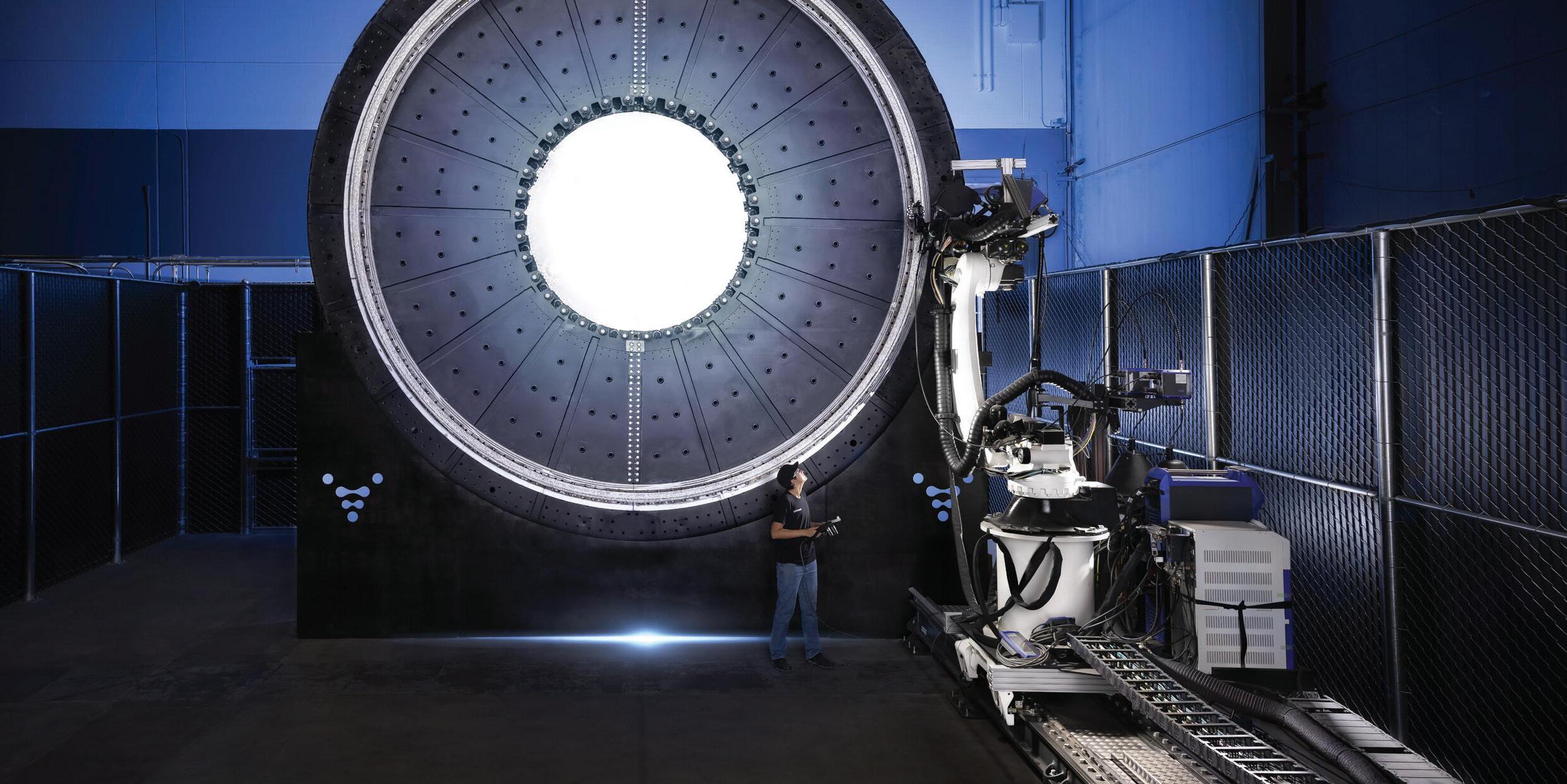
WITH THE POWER OF HUMAN MOMENTUM.
What makes a state a great place to do business? Let us count the ways.
There are more than a dozen factors that enterprises find are important to their success — and, in particular, vital considerations as they decide where to locate, relocate or expand. These factors influence various aspects of the cost of doing business, the ease and speed of proceeding with a new project, the ability to hire and train the right people, and the overall hassle factor. Every year, Area Development consults with a panel of experts whose careers are involved in location selection and economic development, asking them which states excel at these all-important characteristics.
The result is our annual Top States for Doing Business feature. If you’re a regular reader, you’ll see a lot of familiar names here, which is not entirely surprising because it takes a lot of time and effort for a state to hardwire these valuable traits and build solid reputations.
We generated an overall list of Top States by analyzing and compiling the highest performers in more than a dozen different categories, about which there will be a lot more detail below. Check the first 10 overall honorees and you will see the same 10 states that were there last year. The order is a bit rearranged, but one important thing is unchanged: Georgia tops the list. Again. For the 10th year in a row, in fact.
That can be explained by the fact that as you look through the individual lists of what makes a state a great place to do business, you will find Georgia uniformly at or near the top of most of them. The state has carefully assembled most of the building blocks that location decision-makers are looking for, and that work translates into success on this ranking.
Another thing that hasn’t changed is the fact that the South is well-represented here. Jurisdictions in the Southeast, in particular, have built attractive incentives, workforce programs, and a generally business-friendly attitude, and their labor markets tend to be favorable in terms of cost, availability, and right-to-work status. There are standouts elsewhere, too, including traditionally industrial states such as Ohio, Indiana, Michigan, and Illinois. You’ll find the sun shining on such places as Arizona, Kansas, Arkansas, and Iowa, and it’s no surprise that
New York is a leading destination, too. Read on for more details on the factors that went into these overall rankings, and which states excel in these areas. Note that we have a separate sidebar that takes a deeper dive into the highly important category of workforce training.
It’s always worth pointing out that which state is best for your project depends entirely on the details, your requirements, and other unique circumstances. Just because a state isn’t near the top of some of these lists, or any of them, doesn’t mean it’s not the perfect place for your company’s expansion. Every state is eager for your jobs, and any state could be the perfect match for reasons that pertain to your most important needs.

Plenty of things go into the cost of doing business, some of which have to do with geography and resources, some of which relate to matters that are more under the direct control of state officials. Georgia tops this list in part because it’s well-located in the booming Southeast, and well-connected from a logistical perspective. But it certainly doesn’t hurt to have a low corporate tax rate that hasn’t risen in many decades, and even dropped a quarter point a few years back.
continued on page 34
Our 2023 Top States for Doing Business rankings reflect the results of our recent survey asking leading consultants to industry to give us their top state picks in 14 categories that impact companies’ location and facility plans. The states in each category were ranked based on their number of mentions in the particular category, and total mentions in all 14 categories — weighted by the diversity of categories in which a state was mentioned — were calculated to rank the top 20 states overall.
Employers often say that people are the most important part of their success. They’re doing the work, creating the innovations, serving the customers. Without the right people, and enough of them, an enterprise is likely to falter.
That’s what makes workforce training such a critical part of what it takes to be a Top State for Doing Business. And it’s why we’re putting some extra spotlight on this topic.
Georgia sits atop the list of states with the best workforce training opportunities. At the heart is the state’s Quick Start program. It’s offered through the Technical College System of Georgia and delivers customized training targeted at new and expanding businesses. Companies in manufacturing, biotechnology, information technology, and other sectors need techsavvy workers with specific skills, and this program has helped attract those businesses to Georgia.
SK Battery America began mass production of electric vehicle batteries last year in Jackson County, and as it ramped up for that milestone the company was able to significantly beat its hiring goal. “The state’s Quick Start program has helped us attract and train workers with a speed and scale that would be difficult for any company to do on its own,” says the company’s CEO, Timothy Jeong.
Virginia, landing second on this list, has its own top-notch training programs to boast, and its programs have helped land a number of big deals. Lego Group, for example, is building a billion-dollar manufacturing facility that it will populate with all kinds of automation technicians, engineers, IT professionals, and others. The company and state officials are busily developing training and recruitment programs.
Leading the way in this state is the Virginia Talent Accelerator Program brought together by the Virginia Economic Development Partnership and the Virginia Community College System. The program aims to accelerate new facility and expansion through tailored recruitment and training services. The Virginia Jobs Investment Program also facilitates customized recruit-
ment and training services but by means of grant funding of up to a thousand dollars per eligible job impacted. Companies pick their own training and recruitment providers.
In third-ranked South Carolina, a wide range of employer resources assist in various situations. SC Works, for example, helps employers through the process of screening, matching, hiring, training, and retaining. And its experts help expanding companies to sort through available workforce programs and tax credits. Specialized programs include one supported by local technical colleges providing training resources for the state’s auto suppliers to tap into during periods of slowed production, so that when they ramp back up, they have upskilled workers on the factory floor.
The LED FastStart program from Louisiana Economic Development has been around for a decade and a half, providing customized recruitment and screening, as well as development and delivery of customized training, ranging from hands-on simulations to interactive e-learning modules.
All kinds of businesses can tap into LED FastStart resources, including manufacturing, software, corporate headquarters, warehouse and distribution, R&D, and digital media. And by the way, there’s no cost. The program is one of the reasons this state lands at #4 on the workforce training list, and also one of the reasons it landed a billion-dollar promise from First Solar for a solar panel plant worth 700 jobs.
Customized technical training can be had for free in #5 Alabama, too, including through AIDT. Companies share what they think the ideal applicant would look like, AIDT assesses applicants and creates a companyspecific training program, and once the best candidates are chosen, AIDT delivers job training and process improvement. The program has trained roughly a million people.
Alabama’s industries are strong partners in training and preparing the workforce. Take the state’s auto continued on page 32
Georgia has been named the Top State for Doing Business. See how Georgia’s decades-long success can accelerate the growth of your business.






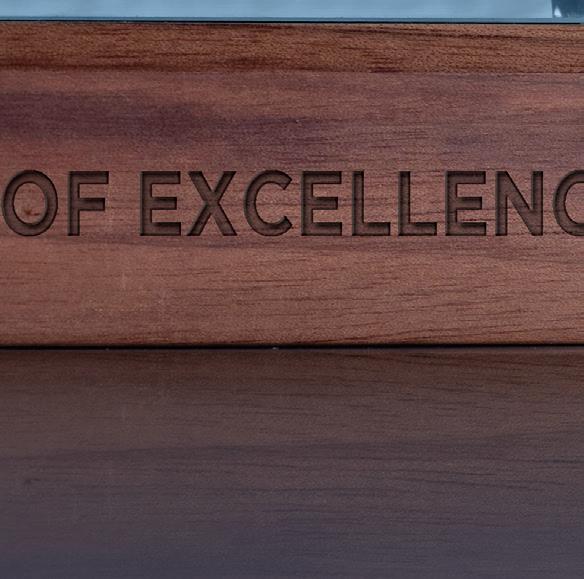


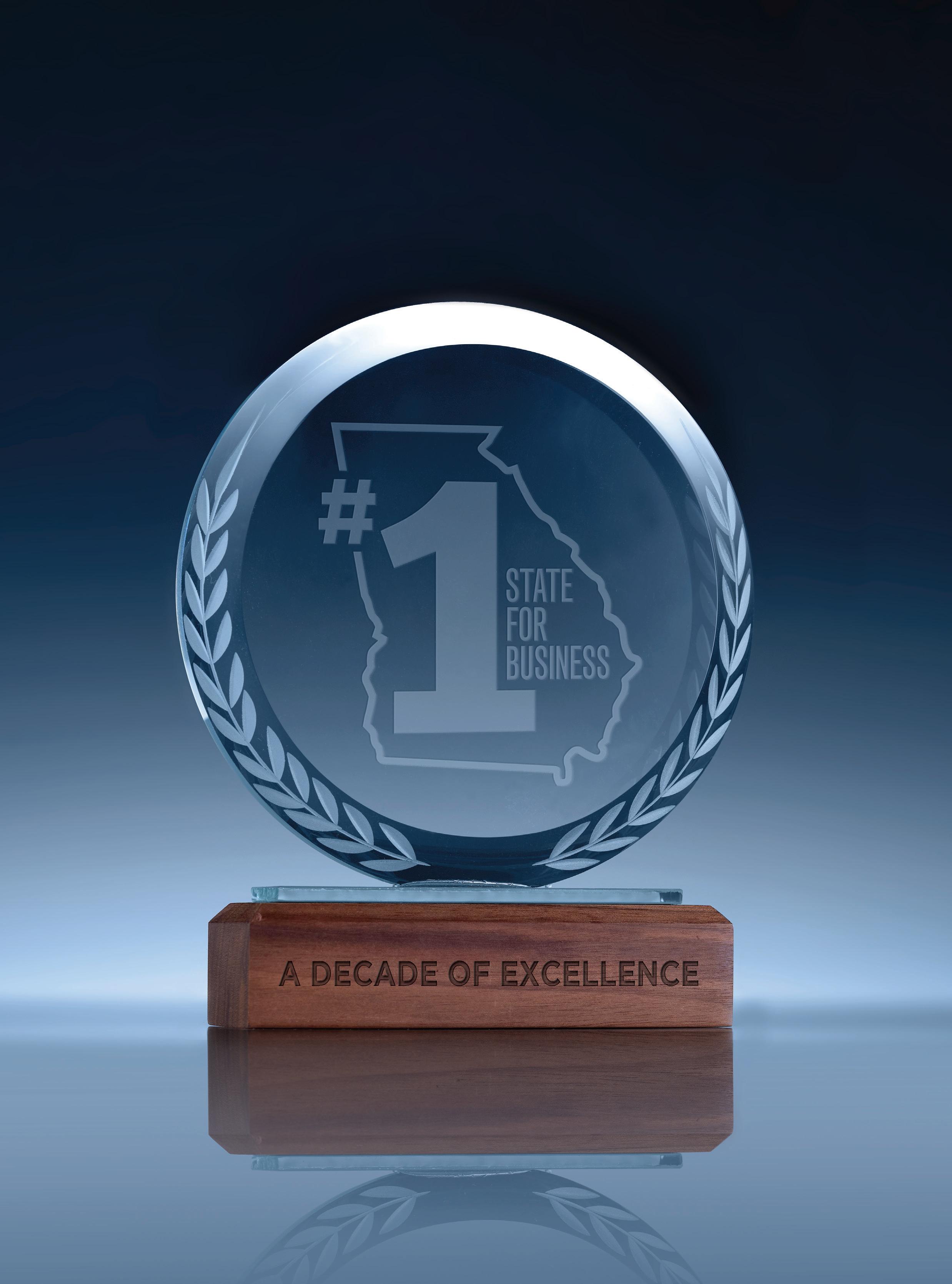
continued from page 30
industry as an example. Hyundai Motor Manufacturing Alabama has a Hyundai Initiative for Robotics Excellence program that creates robotics teams and programs at public schools. Meanwhile, Toyota Alabama is investing in public STEM education in this state ranked fifth for its workforce development programs.
Tennessee, ranking sixth on this list, takes a holistic approach to delivering a well-trained and qualified workforce. There are multiple programs that together are aimed at giving Tennesseans a solid educational foundation that employers can easily tap into and build upon. The GIVE initiative, short for Governor’s Investment in Vocational Education, is expanding access to vocational and technical training at the high school level. The Tennessee Promise ensures that high school graduates can access two years of tuition-free training at a community college or technical school. There’s also a program aimed at Tennessee adults who don’t have an advanced degree, offering them free access to community college.
North Carolina places seventh with its well-honed
reputation for training and educating its workforce. NCWorks, the statewide workforce system, is one example. Its job training programs include both classroom instruction and on-the-job training. There are customized training opportunities along with the potential for employer reimbursement. Also available are recruiting services that range from advice on trends to hands-on help with the candidate search. There are 80 career centers across North Carolina.
Indiana moves onto this list in the #8 spot with such programs as the Employer Training Grant. It’s reimbursement of up to $5,000 per employee helps employers train, hire and retain workers in various priority industry sectors such as advanced manufacturing, health and life sciences, transportation and logistics, IT and business services, building and construction, and agriculture. Beyond the grants, there are apprenticeship programs, recruitment programs, and other resources.
Arizona is ninth, and its “Business First” navigator program is one of the reasons. It’s no-cost talent acqui-
Home to Fortune 500 companies and Fort Moore (formerly Fort Benning). Columbus continues to thrive because of a strong business environment. Our advanced manufacturing, food and defense companies continue to Choose Columbus and are growing with us! An ideal location with steady leadership, top talent and a track record of innovation. Explore Columbus because we do Amazing!
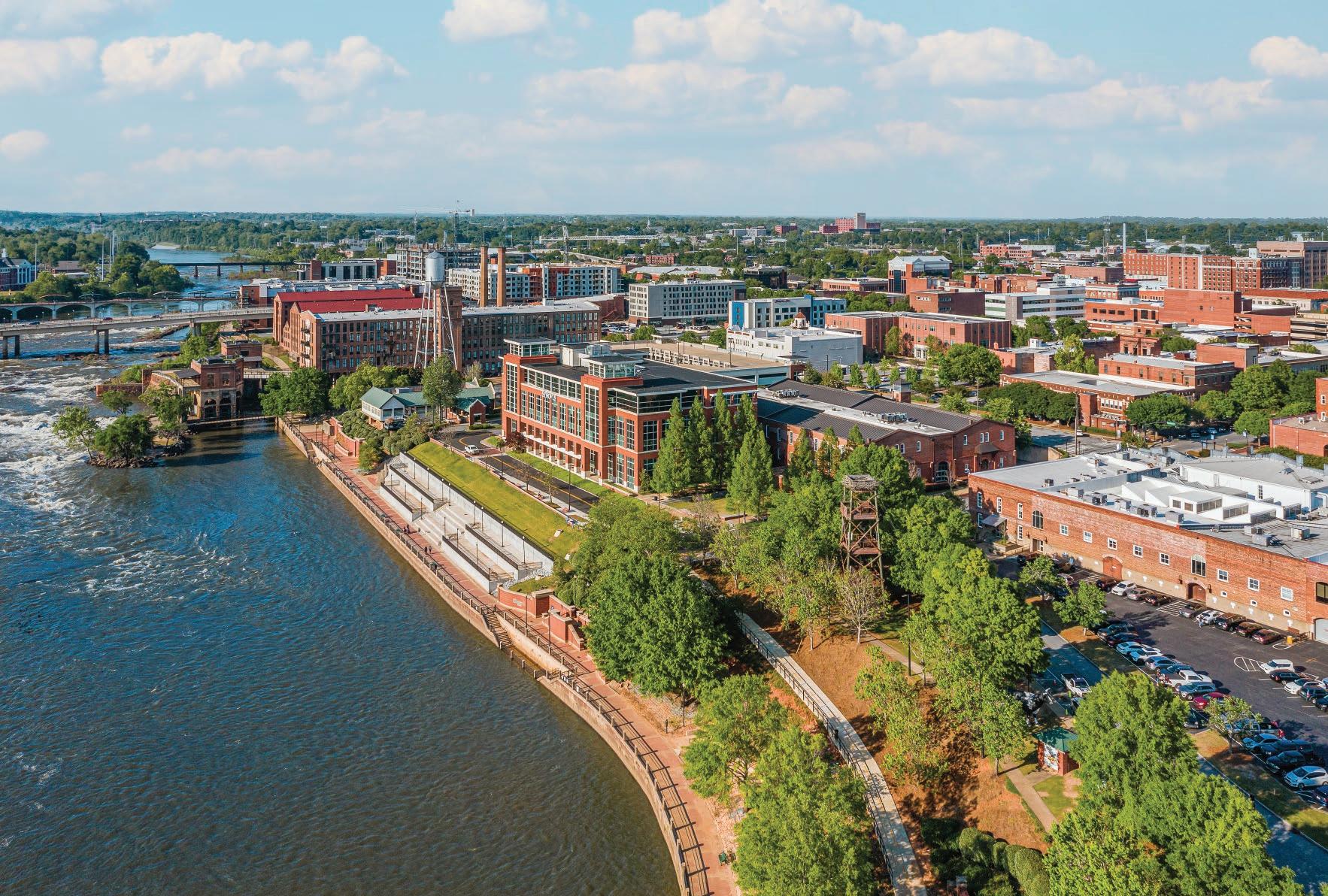
sition assistance from the Arizona Commerce Authority, and as the word “navigator” suggests, it’s intended to guide businesses through a variety of workforce-related needs, including both training and recruiting. In fact, Arizona’s navigators also help companies figure out federal workforce programs, which is an area a lot of states don’t cover.

The state has, for many years, been a leader in semiconductor industry talent, and that has helped it Arizona land billions of dollars in investments in the past few years. Universities have helped build that talent, along with other training programs involving industry partners. A new BuilditAZ initiative aims to add deep benches of talent in various trades through apprenticeships.



The 10th slot on this all-important list goes to Ohio. Its Office of Workforce Transformation is one of the ways Ohio aims to keep its workforce trained for what’s coming next — for example, a new electric vehicle workforce strategy focuses on preparing the state to meet the talent needs of that booming sector.



continued from page 29
Likewise, neighboring Alabama aims to keep the cost of business low with such pluses as competitive tax rates, abatements for various reasons, and Opportunity Zones that offer incentives for targeting geographic areas of need. Alabama’s neighbor to its north, Tennessee has the second-lowest state and local tax burden per capita, as well as no income tax on wages. And a step to the west, in Mississippi, the cost of doing business is kept favorable with a low corporate tax rate, various incentives, and, in general, business and living costs that are well below the national average. Indeed, when it comes to overall favorable business costs, most of the leading states are in the Southeast, along with Indiana, Ohio, and Texas.
Incentive programs are among the business cost factors that economic development leaders can really influence, whether we’re talking tax breaks, grants, low-interest loans, or other kinds of assistance. Perennial leaders in this regard include Georgia and South Carolina, once again the #1 and #2 on this list. To take South Carolina as an example, state and local sales tax exemptions lower manufacturing costs. Serviceoriented businesses such as data centers, along with enterprises in other sectors, can earn their own exemptions by investing and creating jobs.
Once again, this category is largely dominated by Southern States, but two further north not only make a repeat appearance but move higher on the list. Ohio moves up a spot to third, and Indiana slides up two places to fourth on the business incentive program list. And Arkansas jumps onto this list with a wide range of generous incentives, including its Tax Back sales and use tax refund for such things as machinery and building materials, job creation incentives, equity investment credits for encouraging creation of higher-paying jobs, R&D incentives, and even credits for bringing Hollywood to Arkansas.
Money may make the world go around, but there are parts of the world where there are especially large sums being made available for business capital and funding. This is a category where areas of the country away from the South have a chance to excel. The innovation hotbed of California is not coincidentally the leader in access to capital and funding, according to our experts. One look at the Statista rankings1 of venture capital by state last year shows just how much California leads the pack, at $104 billion, far ahead of the $29 billion raised in New York, second-place on Statista’s list (and also ours).
Texas lands third on our list of access to capital and funding. It’s
Plenty of things go into the cost of doing business, some of which have to do with geography and resources, some of which relate to matters that are more under the direct control of state officials.
Unrivaled global transport infrastructure. Powerful incentives. Award-winning workforce training. Explore the advantages at OpportunityLouisiana.gov.
 6 Class 1 Railroads
7 Primary Airports
6 Deepwater Ports
6 Interstates
6 Class 1 Railroads
7 Primary Airports
6 Deepwater Ports
6 Interstates
fifth on Statista’s overall VC list, but of course, VC isn’t the only kind of funding out there. Texas boasts the nation’s largest dealclosing fund, the Texas Enterprise Fund, which is a performancebased incentive designed to move the state over the goal line in competitive economic development situations.
As with a number of these categories, there are multiple factors that make for a competitive labor market. One of the most important is simply the availability of labor, which these days is anything but a given — to do well here, a state either needs a solid supply of existing labor or it needs to be good at attracting more. The leading 10 states can all check one or both of those boxes, and Georgia is once again at the top of this list.
A competitive labor market also, of course, suggests labor at a competitive rate of pay, and once again, the top 10 states do well in that regard. All but one are among the bottom half of states when it comes to median wages. All but one also are right-to-work states. And if you cross-reference this list with our separate section on workforce training, you’ll see a lot of overlap, too, since exceptional training resources help boost the availability of qualified and competitive labor.
Pretty much annually, you’ll find Georgia and Tennessee at the top of the list for energy availability and cost. They are perpetually attractive for industries requiring lots of energy, and reliable energy.
It’s worth pointing out that the cost factor is not just a matter of basic energy rates. For example, Georgia Power helps boost busi-
ness bottom lines through energy efficiency programs and rebates, management tools that can lead to savings, and business advisory services that help users deal with energy-related challenges and increase efficiencies.
Tennessee’s perpetual spot at or near the top has to do in part with the rates charged by local power providers served by the Tennessee Valley Authority, a federally created public power wholesaler that sets rates below roughly 70 percent of the country. In the #3 spot, South Carolina’s energy-related business advantages include the series of rebate and incentive programs provided by Santee Cooper, the state’s largest power provider and one of the nation’s biggest public power utilities.
A new category on our list is water availability, and it’s a sign of the times. Certainly, many industrial users have long had significant water needs, but climate change is impacting availability as certain regions cycle in and out of drought conditions.
Ohio lands atop this list, and its positive water picture can be pegged in part to the fact that its entire southern boundary and much of its northern edge are bordered by fresh water, lots of it. But the state is also aiming to be forward-thinking in terms of water infrastructure. For example, the Ohio BUILDS initiative includes millions of dollars of grant funding for water projects, including construction of new water systems, replacement of aging water lines, and installation of new water mains.
Michigan also has many miles of fresh water along its borders and within its central areas, and it also is dedicating significant resources to its water infrastructure. A multibillion-dollar infrastructure program approved last year
To learn more about how inspiring businesses are leading the way to a strong economy, visit ArkansasEDC.com/ whyarkansas



“
We have people come in here every day who say, ‘This is something I wouldn’t expect to have in the Delta.’”
Harvey Williams, Co-founder – Delta Dirt Distillery, Helena
includes substantial sums targeted at water improvement projects, along with wastewater and stormwater upgrades.
Measures of infrastructure are likely to be rather fluid in the coming years, as the nation’s infrastructure is getting more attention and investment these days than it has in years past. Improvement projects, funded locally and by new federal dollars, are literally all over the map.
In the meantime, though, Georgia remains at the top of this category, as it has been in the past. From a logistics perspective, it sits in a perfect geographic location for serving the population centers of the Southeast. It has excellent deepwater port access,
including the nation’s fastestgrowing container port in Savannah, and air connections through the Atlanta International Airport that is literally the world’s busiest and also most efficient. In the #2 spot, Texas claims more miles of public roads and freight rail than any other state, plus 11 deepwater ports and a half dozen of the nation’s busiest airports.
Advantageous locations and solid infrastructure also are helpful for neighbors Indiana, Ohio, and Kentucky. Indiana has an evergrowing logistics sector along its “Crossroads of America” highway system, while Ohio is strong in multiple modes of transportation. Kentucky lies within a day’s drive of two-thirds of the American population, has been a strong state investor in road infrastructure, and hosts the biggest hub and primary international gateway for UPS.
Several familiar states are on Area Development’s 2023 Top States for Doing Business list, including Georgia, South Carolina, Tennessee, North Carolina, Ohio, Indiana, Virginia, and Texas. These states share similar traits: good overall business climates, predictable regulatory and permitting processes, developable sites, and responsive economic development organizations. These states continue to win projects because they are strategic, opportunistic, and proactive.
It is important to note the presence of some states that have not appeared on the top-20 list as near the top as they are this year or at all. These states reflect well on their respective state’s economic development organizations and team members. In addition, they have demonstrated success in winning projects and addressing key issues impacting site selection decisions.
By Larry Gigerich, Executive Managing Director, Ginovus; and Chair, Site Selectors GuildNo state is perfect, and every state has policies or other attributes that need to be made better. Talent, infrastructure, real estate, quality of place, tax structure, regulatory environment, and economic development incentives all have an important role to play in the site selection process for corporate decision-makers.
The lesson learned from the states appearing on this list is that they are proactively working on their weaknesses, leveraging their assets, and have talented economic development officials focused on growing the economies of their cities, regions, and states. As a result, they have established a demonstrated track record of success and positioned themselves well for the future. The closing message to all economic development officials is to not get complacent and continue to innovate for long-term success.
The top ranked states are leveraging their assets and positioning themselves for future economic development success.
For over 120 years, SRP has ensured that Greater Phoenix has had a reliable water supply — and that’s not changing any time soon.
As our residential and business populations continue to grow, we’re finding new ways to expand water storage capacity, use hydrologic data and activate long-term climate plans. If you’re searching for a new place to plant your business, Greater Phoenix has enough water to help it grow strong roots.
Get the full story at powertogrowphx.com.

1
2
3
4
5
6
7
8
9
The real estate markets, which have been messy and unpredictable in recent years, may be cooling off some, but it can still be a challenge to locate an available property or facility at just the right time, in just the right place. Our rankings for the top states for available real estate have shifted somewhat, and South Carolina now tops the list. Georgia, which had led in this category, drops to fourth. Texas holds onto the second-place spot, and Ohio leaps up to third.
Needless to say, obtaining a suitable piece of real estate is essential for location or expansion,
but it’s only part of the story of getting that facility up and running. Check the categories below that relate to site readiness, the regulatory environment, and the general friendliness of the state and local governments — all of these are essential elements to taking a real estate story all the way to a happy ending.
This category is arguably a bit subjective, but it’s one of the most important factors along with the ability to find the right workers and put together an affordable deal. This category reveals a list
Access to training programs as well as incentives for automation are helping companies meet their workforce needs in the top-ranked states.
With two of McGuire Sponsel’s four offices in the Midwest and Southeast, our Location Advisory Services team was not surprised to see high rankings for Midwest and Southern states. Our work with many of these state and local authorities and economic development teams would support such a leading ranking for these states. Southern and Midwest states have done a tremendous job in supporting environments that help to control costs and make resources widely available. These two factors are critical to future successful business operations, which companies integrate into their location decisions.
We also observe that companies are still highly influenced by the average wages and available workforce within an area. Understanding that wages are high and that the available workforce has been limited over the last couple of years, access to training programs is extremely important for growing a workforce internally for many businesses. Additionally, states that support companies with investment incentives for automation help them bridge the gap due to a limited available workforce and increasing production demands. Process automation will only continue in the future, and states that support these investments will continue to see significant economic development traction. Similarly, states
should expect greater demand for support with sustainable or renewable projects as more and more businesses are looking to make direct investments in those areas.
The results of the Area Development’s Top States for Doing Business survey show that regions appear to have what we call a “node” state (a top performer), with surrounding states competing for business with similar programs and resources. For example, Georgia was listed as the numberone state in seven out of 14 categories and in the top five for five other categories. However, Tennessee and North and South Carolina were always within a few positions. Similarly, Ohio performed well in many categories, with Indiana, Virginia, and Kentucky close behind.
States that consider neighboring programs and seek to replicate or improve on them will continue to deliver value to businesses making critical location decisions. We believe there are a few states to keep an eye on, such as Iowa in the Great Plains region, Arizona in the West, and Louisiana in the South. These states have seen significant growth and were in the top 10 in several categories. They continue to innovate and evaluate their performance against their peers and (we believe) will continue to rise in the rankings.
By Ben Worrell, Principal, and Emily Poole, Senior Consultant, Location Advisory Services, McGuire Sponsel
that doesn’t change much, which isn’t surprising, because the nature of state and local government is grounded in culture, attitude, reputation, and history.
So, here’s another one that Georgia leads. Why? Everything from a solid fiscal picture to generous incentives to invaluable assistance in finding, attracting, and — if need be — training the right people. The top five are rounded out by Tennessee, both Carolinas, and Ohio, and that’s the same as last year, too. All boast of their fiscal responsibility, lack of regulatory hassle, willingness to lift the bottom line, plus workforce investments.







touting what states have, this is a category where states like to brag about what they don’t have. Topping the list is Florida, which likes to talk about its zero-percent personal income tax, lack of a corporate income tax on certain kinds of corporations, and lack of a state property tax. That last “no” means that even when local property taxes are added in, property taxes still average below national norms. The Tax Foundation2 puts Florida in the top five best states.
North Carolina is second on the list this year, perhaps in part because it’s well on the way toward phasing out its corporate income tax. It’s been heading downward for a number of years
430+ 10 REGIONS YEARS 100%

porate


South Carolina’s efforts to streamline the location and expansion process have landed it atop the list of site-readiness programs this year. The state’s department of commerce operates a LocateSC.com service designed to simplify the search for sites that are good candidates, and the Palmetto Sites program vets sites to verify critical information and assure they are “checked for readiness.”
Second on the list is Georgia, with its Georgia Ready for Accelerated Development program, or GRAD for short. These are fasttrack sites that have graduated, so

to speak, through the due diligence process, been reviewed by a third party, and gained approval of a board of advisors. Ohio invests significant sums of money to create shovel-ready sites, vetted and hassle-free. And one click leads to a map of Tennessee Certified Sites in all corners of the state, prime locations declared ready to roll.
The shovel-ready sites mentioned above have often jumped through the regulatory hoops already. Otherwise, it’s important to consider how easy or hard it will be to get permission from a specific jurisdiction to do what you want to do with your site. This year, Alabama moves to the head of the class for favorable regulatory environment,


perhaps reflecting some of the state’s recent legislative work to elevate business-friendliness.
South Carolina remains near the top of this list, thanks to its careful balance of business friendliness with an eye toward sustainability. Georgia is near the top again, with the top five rounded out by Tennessee and North Carolina. As usual, the South is home to the most favorable regulatory environments, according to our experts, but also as usual, Indiana makes the list. This
Ohio does, too.
In reviewing the 2023 Top States for Doing Business, a few things stood out to me. The five states that rank highest overall are all also in the top five for cooperative and responsive state/local government. This is not a coincidence. While there is a myriad of factors that contribute to these states reaching the top tier in the overall ranking, a common denominator among them is governments that are responsive to the needs of business. The policies and programs within each of these states are designed to attract companies and enable them to thrive. Developing, implementing, and maintaining the policies and programs that facilitate capital investment and job creation requires dedicated and coordinated efforts among multiple agencies. The continuity among the states in the top tier is reflective of a sustained focus on a positive business climate.
A second observation was that although Southern States continue to dominate the top spots in the 2023 Top States survey, there are once again two Midwestern States in the top 10 – Ohio (#5) and Indiana (#7). These states rank particularly well in four areas that have helped elevate them
By Kim Williams Davis, Director, Quest Site Solutions yearto the top tier of the overall ranking and keep them there — competitive labor market, logistics and infrastructure, sitereadiness programs, and business incentive programs.
For the most part, the states that rank highly in the overall list perform well in each of the categories examined. One notable exception is access to capital and funding.
California claimed the top spot on this list, the only appearance for California within the 2023 results. There were just three Southeast States in the top 10 within this category — Georgia (#5), Virginia (#6), and North Carolina (#8).
The rankings for utilities are the final items of note. Utility demands have increased in recent years — and not just for mega projects. Projects of all sizes are seeking higher utility capacities than ever before. For this reason, the importance of energy availability and costs and of water availability are more critical than in the past and are likely to continue to grow in importance. Not surprisingly, Southeast States are ranked as the top five locations for energy availability and costs. In contrast, the top rankings for water availability went to two Midwestern States — Ohio (#1) and Michigan (#2).
Multiple agencies in the top-ranked states have developed, implemented, and maintained programs facilitating capital investment and job creation.
It’s important to consider how easy or hard it will be to get permission to do what you want to do with your site.
If you want to position your business in the most desirable area of the country right now, the Savannah corridor, take the easy route: use the Georgia Ports’ Site Selection Tool. This robust online resource allows you to easily compare land and building availability, work force readiness, plus, important utility and transportation options.
Real-time data. Really fast. Go to GAPorts.com/SiteSelection and set your sights on success.
Companies locating in Virginia tout the benefits of its Talent Accelerator Program, which assists with employee recruitment and provides customized workforce training.
Since its launch in 2019, the nationally acclaimed Virginia Talent Accelerator Program has helped to secure more than 11,000 jobs across the Commonwealth. Continuing a trend that started during the COVID-19 pandemic, the program is playing a significant role helping Virginia capture the wave of reshoring manufacturing to the United States. The Virginia Talent Accelerator Program provides world-class training and recruitment solutions that are fully customized to a company’s unique operations, equipment, standards, and culture and enables leading manufacturers to hit the ground running in the Commonwealth.
The Talent Accelerator helped Virginia land recent wins like the Weidmüller Group’s $16.4 million expansion in Chesterfield County that will create 100 new jobs. Another German company, Zollner Elektronik AG, will invest a combined $18 million to expand in Danville and Loudoun County, growing its market presence in the United States and creating 100 new jobs. Delta Star, Inc., the largest American-owned medium transformer manufacturer in the U.S. and the premier manufacturer of mobile transformers in North America, recently announced a $30.2 million investment to expand its manufacturing and headquarters operation in the city of Lynchburg and create 149 new jobs.
“The Commonwealth of Virginia offers a unique set of advantages such as
transportation access, business-friendly attitude at both state and local levels, along with exceptionally well-executed and supported workforce development and recruitment programs,” said Delta Star CEO Jason Greene.
career and lifestyle opportunities unique to each company’s Virginia location. The Talent Accelerator team also produces recruitment videos designed to give interested job candidates a peek inside each company, showcasing everything from their processes to what inspires people to build a career there.
The Virginia Talent Accelerator Program results have been impressive: the average response time between the public announcement and registration of the first applicant is 18 minutes. Delta Star, Weidmüller, and Zollner all saw hundreds of applicants within a matter of weeks, with subsequent specialized training planned to help new employees quickly acclimate to the operations. Following the 2022 announcement that the LEGO Group selected Virginia for its $1B U.S. factory, the Virginia Talent Accelerator Program team got to work immediately designing a customized recruitment website that went live with the project announcement and drew more than 3,000 job candidates within 36 hours.
“I’ve never seen [anything] like the Virginia Talent Accelerator Program, and I’ve been to many places around the world to look at facilities,” said Carsten Rasmussen, COO, The LEGO Group. “I have never seen the dedication, the willingness, the want to help support Virginia, future employees, and the LEGO Group in making sure we have the right fit. It’s phenomenal.”
The Virginia Talent Accelerator Program’s work begins immediately with the development of highly customized recruitment websites that feature the
“I’ve never seen [anything] like the Virginia Talent Accelerator Program, and I’ve been to many places around the world to look at facilities,” said Carsten Rasmussen, COO, The LEGO Group.
The Virginia Talent Accelerator Program is helping electronics equipment manufacturing companies like Weidmüller Group hit the ground running in the Commonwealth. Since its launch in 2019, the nationally acclaimed Virginia Talent Accelerator Program has helped to secure more than 11,000 jobs across the Commonwealth, with clients spanning industries as diverse as manufacturing (The LEGO Group), aerospace (Rocket Lab), pharmaceutical manufacturing (Civica Inc.), and shipping (CMA CGM Group). Talent Accelerator recruiting and training services are fully customized to each company’s unique operations, equipment, standards, and culture.
Find your advantage at VEDP.org

This, too, is an important consideration if you’re not picking a site that is already label “shovel-ready” and pre-cleared through permitting processes. It’s important because without preclearance, your project could potentially be in for a long wait, depending on where it’s located.
That reality has partly to do with the political culture. Some states have a stricter or more detailed permitting process than others. Politics watchers will thus be unsurprised that the states known for speedy permitting are largely in the South, where a laissez-faire attitude is more likely to be in place. The other factor that can help or hinder speed of permitting is staffing, or lack thereof. A lot of jurisdictions never really recovered from pandemic staffing shortages and backlogs.
While lower than it was just a year ago, remaining inflation pressures — combined with strong consumer demand and growth brought on by onshoring — are making speed to market one of the most important site selection criteria. Speed to market also impacts the two other important site selection criteria — site availability and workforce availability.
Speed to market is often measured by the interrelationship among three of the criteria used in this year’s rankings — favorable regulatory environment, speed of permitting, and the overall cost of doing business. And in reviewing those rankings, nine of top 10 states are in each of those three categories.
A common misconception about speed to market is that it implies a lax regulatory climate that exposes the public and workers to unsafe conditions. A review of the top states, however, does not bear this out. Instead, what most of these states have done is developed a regulatory, permitting, and
cost structure that fairly balances the needs of business and mandates to protect the public.
This has often been accomplished through several paths. Some states have created fast-track permitting processes that designate a “strike force” to quickly review and address permitting issues for new projects. Others have brought on board third-party resources that can be quickly deployed on an as-needed basis. There are even places where companies can pay extra fees to be put on the top of the stack for review.
The great benefit of implementing these programs at the state and local levels is that they are often achieved at very little cost. Instead, they are about prioritizing public resources to facilitate efforts that will enhance economic growth and competitiveness. And, since time is money, the value of these activities can sometimes outweigh the benefits achieved through incentives.
By Christopher D. Lloyd, Senior Vice President and Director, Infrastructure and Economic Development, McGuireWoods ConsultingA balanced regulatory, permitting, and cost structure allows companies to get up and running and get their products to market quickly.









In Arizona, you’ll find the perfect balance of business opportunity and high-quality lifestyle that makes it a top state to live and work. Businesses benefit from pro-innovation policies and business stability. Residents enjoy a reasonable cost of living compared to other major metros and beautiful scenery, all while taxes remain low for everyone. With a highly skilled talent pool and a commitment to future-forward industries like semiconductors, electric and automated vehicles, and battery manufacturing, we’re maximizing our potential for generations to come.


Area Development’s Top States for Doing Business 2023 survey results place mainly South/Southeastern States on top. The top three — Georgia, South Carolina, and Tennessee — have landed major project investments in the electric vehicle and battery industry (Hyundai EV plant/$5.5 billion and Rivian EV plant/$5 billion in Georgia, VW Scout plant/$2 billion in South Carolina, and Ford Blue Oval City/$5.6 billion in Tennessee). The automotive industry is booming due to the transitioning to EVs, and also lots of supplier projects are happening.
The Inflation Reduction Act (IRA) is also helping to bring new manufacturing projects to the U.S. In addition, the CHIPS and Science Act supports the semiconductor industry, and several large projects were announced — for example, Intel in Ohio and Samsung in Austin, Texas. All of these top states offer competitive utility rates, a green energy mix, a business-friendly environment, excellent training programs, and fast permitting procedures. Project timelines have become much faster;
By Alexandra Segers, General Manager, Tochitherefore, an easy regulatory process is very important.
Availability of skilled labor is a problem across all states at the moment. A well thought-out training program is essential, and Georgia leads this category with their Quick Start program followed by Virginia, South Carolina, and Louisiana.

Water availability is becoming an important topic especially for the semiconductor and battery industries. Ohio and Michigan lead this category in the survey, ahead of the Southeast States, as well as New York and Wisconsin.
Indiana and Ohio join the Top 10 States with top scores in logistics/infrastructure as well as available real estate. To have real estate available is crucial. The top-ranked states had mega sites developed over the last couple of years. California, New York, and Massachusetts only score high on access to capital and funding, but of these three states, only New York made the top 20.
Florida, Arizona, and Mississippi did make the top 20, as they are getting more and more popular for manufacturing projects in addition to their corporate, aviation, and life science clients.
Training programs, water and real estate availability, and competitive utility rates are among the factors helping the top states to land billion dollar EV and semiconductor projects.
Advisors LLC





All that said, your project is likely to get a speedy and fair shake in such places as South Carolina, Alabama, Georgia, Mississippi, and Tennessee, among other southern locales. Your business can also hope for speedy resolution if your site is located in such places as Indiana, Ohio or Iowa, according to site selection experts who responded to our 14th annual survey.
1 https://www.statista.com/statistics/424167/ venture-capital-investments-usa-by-state/ 2 https://taxfoundation.org/research/all/ state/2022-state-business-tax-climate-index/
Site-readiness programs have grown significantly in importance during the past few years. Large or “mega” electric vehicle and semiconductor chip projects have driven the need for large greenfield sites to be ready for development. In order to be positioned to be ready for development, significant due diligence needs to be completed. Issues, such as land ownership, zoning, infrastructure, environmental, engineering, and permitting need to be completed at some level to give site selectors and corporate decision-makers the confidence that they can move forward with development in a timely manner.
Leading states, such as South Carolina, Georgia, Tennessee, North Carolina, and Ohio have been focused on site-readiness for decades and have had demonstrated success with sites of all sizes. These states know what they are doing and have hired consulting teams with expertise to ensure they have their “ducks in a row” when it comes to site due diligence.
By Larry Gigerich, Executive Managing Director, Ginovus; and Chair, Site Selectors GuildIn the past two years, Indiana and Kentucky have taken huge steps forward on site-readiness, and both states have been rewarded with large project wins. In the case of Indiana, Eli Lilly has committed to the construction of a new $3.7 billion facility northwest of Indianapolis. Kentucky won a nearly $6 billion new Ford manufacturing facility between Louisville and Bowling Green. Both projects were “statement” wins for their respective states.
No state has the perfect “secret sauce” when it comes to site-readiness. The key thing for communities, regions, and states to do is identifying developable sites that have access to talent, infrastructure, and research assets. Then, the focus needs to turn to the critical due diligence site issues related to the environment, engineering, permitting, and land ownership. Moving down the site-readiness path in this manner positions an area for future success.









Greg Canfield, Secretary Alabama Department of Commerce 401 Adams Ave. P.O. Box 304106 Montgomery, AL 36130-4106 800-248-0033 contact@madeinalabama.com madeinalabama.com
Sandra Watson, President & CEO Arizona Commerce Authority 100 N. 7th Ave., Suite 400 Phoenix, AZ 85007 602-845-1200 SandraW@AZcommerce.com Azcommerce.com
James P Smith, Director Pinal County Economic and Workforce Development 135 N Pinal Ave Florence, AZ 85132 520-866-6664
james.smith@pinal.gov www.pinal.gov/ed https://www.facebook.com/PCEconDev
Karla Moran, Principal, Economic Development Salt River Project P.O. Box 52025 Phoenix, AZ 85072-2025 602-236-2396 Mobile: 480-748-9291 james.smith@pinal.gov Karla.Moran@srpnet.com PowerToGrowPHX.com
Daniela Gallagher, Vice President, Economic Development Sun Corridor Inc. 1985 East River Road, Suite 101 Tucson, AZ 85718 520-243-1938
daniela.gallagher@suncorridorinc.com www.suncorridorinc.com
Clark Cogbill, Director of Marketing and Communications, Department of Commerce Arkansas Economic Development Commission 1 Commerce Way, Ste. 601 Little Rock, AR 72202 501-682-5996 ccogbill@arkansasedc.com arkansasedc.com
Georgia Department of Economic Development 75 Fifth St NW, Suite 1200 Atlanta, GA 30308 404-962-4000 Georgia.org
Stacy Watson, Director of Economic & Industrial Development Georgia Ports Authority P.O. Box 2406 Savanah, GA 31402 912-964-3879 Fax: 912-964-3869 swatson@gaports.com www.gaports.com
Jerald Mitchell, President & CEO
Greater Columbus Georgia Chamber of Commerce 118 W. 11th Street Columbus, GA 31901 706-327-1566
jmitchell@columbusgachamber.com http://www.choosecolumbusga.com/
Ralph Forbes, PE (Georgia) Thomas & Hutton 50 Park of Commerce Way Savannah, GA 31405 912-721-4157
Mobile: 912-663-6853 (M) Forbes.r@tandh.com
John Culbreath, PE (South Carolina) Thomas & Hutton 803-451-6780 Mobile: 803-608-6197 (M) Culbreath.j@tandh.com
Timothy Downs (NC) Thomas & Hutton 252-725-0289 Downs.t@tandh.com
Bryan Farlow (TN) Thomas & Hutton 615-762-0762 Farlow.b@tandh.com
Kristina Slattery, Commissioner, Business Development Kentucky Cabinet for Economic Development (502) 564-7670
CED.ky.gov
kristina.slattery@ky.gov
There is no other place in the nation quite like Odessa, Texas. Perhaps it’s our spirit of tenacity that has helped us become one of the fastest growing cities in Texas. As the heart of the Permian Basin’s oil and gas region, Odessa offers a central location with easy access to air, rail and interstate.



Opportunity abounds in this thriving city, and we have a proven track record of being open for business. When you’re considering your next site, you’ll find there’s really just one place that has it all – ONLY ODESSA.


Scan to talk to our economic development team and visit our new website: only-odessa.com









Rick Ward, Director of Business Development
Louisiana Economic Development 617 North 3rd Street Baton Rouge, LA 70802 225-342-6016
rick.ward@la.gov
Opportunitylouisiana.gov
Tyler Rossmaessler, Executive Director Flint & Genesee Economic Alliance 519 S. Saginaw St., Suite 200 Flint, MI 48502 810-600-1404
info@flintandgenesee.org DevelopFlintandGenesee.org
Susan Proctor, Director, Strategic Initiatives, Growth and Development Michigan Economic Development Corporation 300 N. Washington Square Lansing, MI 48913 517-719-0393/888-522-0103
Proctors1@michigan.org Michiganbusiness.org
Laura Hipp , Deputy Executive Director Mississippi Development Authority 501 N. West Street Jackson, MS, 39201 P.O. Box 849 Jackson, MS, 39205 601-359-3449 or 1-800-360-3323
lhipp@mississippi.org mississippi.org
Economic Partnership of North Carolina Wells Fargo Capitol Center 150 Fayetteville St #1200 Raleigh, NC 27601
919-447-7777
EDPNC.com
Nelson Lindsay, President & CEO Central SC Alliance
1201 Main Street, Ste 100 Columbia, SC 29201
803-733-1144
nlindsay@centralsc.org centralsc.org
Bill McCall, Economic Development Specialist Santee Cooper One Riverwood Drive Moncks Corner, SC 29461 843-761-8000 ext. 5381 wmccall@santeecooper.com www.PoweringSC.com
Allen Borden, Deputy Commissioner, Business, Community and Rural Development Tennessee Department of Economic and Community Development Tennessee Tower, 27th Floor 312 Rosa L. Parks Ave. Nashville, TN 37243 615-741-1888 https://TNECD.com
Brazos Valley Economic Development Corporation 1716 Briarcrest Drive # 714 Bryan, TX 77802 979-260-1755 www.BrazosValleyEDC.org info@BrazosValleyEDC.org
Tom Manskey, Director of Economic Development Odessa Development Corporation 700 N Grant Avenue Odessa, TX 79761 432-333-7880 tom@odessaecodev.com Only-Odessa.com
Kelly Violette, CEcD, PCED, AICP Executive Director Tomball Economic Development Corporation 29201 Quinn Road, Suite B Tomball, TX 77375 281-401-4086
kviolette@tomballtxedc.org www.tomballtxedc.org
Jason El Koubi, President and CEO Virginia Economic Development Partnership 901 East Cary Street Richmond, VA 23219 804-545-5600 info@vedp.org www.vedp.org
Heather C. Smith , EDFP, CPM, Senior Director, Business & Investment Attraction Global Trade & Investment Wisconsin Economic Development Corporation 608-210-6740
Mobile: 608-234-7290 https://wedc.org

As company needs have evolved, many are gravitating to smaller urban areas that often provide them with a lower tax burden, affordable real estate, and development-ready sites.
By Emelie Hegarty, Business Strategy Manager, Quest Site SolutionsAmidst a time of transformation characterized by changing preferences and economic shifts, numerous major urban centers have witnessed a downturn in economic activity in recent years. During this same time period, many of their mid-size counterparts have flourished. While the rise of these mid-size cities has been under way for some time, the unprecedented changes brought about by the pandemic accelerated their growth trajectory — with notable migration of both companies and new residents.
Defined by a regional Metropolitan Statistical Area (MSA) population spanning from 500,000 to 1,000,000 residents, there are 59 mid-size cities across the United States. About half of them have grown over the past few years and are forecasted to grow more than 2 percent over the next five years. Of those expected to grow, the vast majority are located in the Southeast. In contrast, most of the northeastern cities are forecasted to have very small growth or, in many cases, are expected to contract.
New residents are drawn to the booming mid-size cities due to below average cost of living, favorable climates, and community amenities. Similar factors are at play for business decisions during the site selection process. When the growing communities are examined for corporate investment, a few key themes emerge — favorable tax climate, developmentready sites and buildings, overall cost of doing business, and competitive real estate prices. Examining these themes in more detail, and looking at examples of community successes, offers insights into the reshaping of the economic landscape.
Most of the thriving mid-size cities have a common denominator: a favorable tax climate. When companies are considering establishing a new facility, corporate tax rates, incentives, exemptions, and the overall regulatory environment of potential locations are carefully evaluated during the site selection process. The tax conditions in states and communities directly impact the bottom line. A lower tax burden enables companies to allocate resources efficiently, reinvest in their operations, and achieve greater profitability.
Additionally, companies take into account stability and predictability in tax policies, as a consistent tax framework allows for effective long-term planning and mitigates risks associated with sudden changes. Ultimately, the assessment of a region’s tax climate plays a pivotal role in determining the viability of a new facility. When we look at the list of the top mid-size cities, most were able to check the box of a favorable tax climate, which in turn is one of the key reasons these regions are booming.
For example, recent legislation overhauled the state of Iowa’s tax structure. These statewide changes, including a target corporate income tax rate of 5.5 percent, coupled with other existing tax rates and programs, have resulted in a flurry of development in Des Moines. With Iowa’s 1 percent insurance premium tax being one of the lowest in the nation, along with other favorable tax regulations, Des Moines has become an insurance hub with almost 80 insurance companies headquartered in the region and the highest concentration of employment in insurance and financial services in the United States.
Des Moines has also had success in the data center space with Apple, Meta, and Microsoft having recently announced a combined $8.9 billion in data centers in the metro area alone. For data centers with investments of at least $200 million, equipment directly connected to data center computers is exempt from property tax. There’s also a sales tax exemption on equipment, electricity, and back-up fuel. While Iowa’s favorable tax climate is not the only driver leading Des Moines’ success, it is one of the items that has put Des Moines on the map for many projects.
Another common theme among the top mid-size cities is the availability of development-ready sites and buildings. Speed-to-market can be a major differentiator in a competitive landscape. Having a site or building that is well prepared can give the competitive edge needed to win a company looking to start up quickly. Many of the mid-size communities that have seen success have been working for many years to proactively prepare their sites and buildings for industrial projects. In fact, the vast majority of those mid-size cities have access to some sort of site-readiness program — either a statewide program or a program through a utility provider. This advanced prepwork has made these locations more attractive to prospective companies.
An example of a mid-size community that has experienced success as a result of site preparation is the Greensboro, North Carolina, region. For more than 10 years, a team that included economic development organizations, utility providers, and rail partners, among others, worked together to prepare the Greensboro-Randolph Megasite. The property was purchased, and steps were taken to proactively prepare the property for a mega project. Improvements undertaken included relocating power lines that bisected the property and extending water and sewer infrastructure to the site.
After losing out on some notable projects, the big win finally came in December of 2021 when Toyota Motor North America announced that they would build a new $1.29 billion automotive battery manufacturing plant on the site. Since the original announcement, Toyota has announced two additional investments at the site — $2.5 billion in August 2022 and another $2.1 billion in May 2023,
bringing the total investment to nearly $6 billion.
But this wasn’t the only big win for the region recently. The Piedmont Triad International Airport (PTI) had been purchasing land around the airport and proactively preparing this land for potential aviation projects. In 2022, Boom Supersonic selected PTI for a $500 million operation to manufacture a new supersonic passenger aircraft. While both of these projects were major wins for the region, they would not have happened if the community had not proactively been preparing sites for development.
The overall cost of doing business plays a significant role in a company’s decision of where to operate. While the tax climate is a part of the overall cost of doing business, other factors including utilities, regulatory environment, and labor costs also play a big part in investment and ongoing operating costs. The cost of doing business typically tracks similarly to the cost-of-living index in a community. If you exclude the western cities and southern Florida, the other thriving mid-size cities all have a cost-of-living index below the national average.
One differentiator is wages. Compared to the average annual wage of $64,687 in the bigger metro areas, the thriving mid-size cities is 12.68 percent lower at $56,968. Another differentiator is the ease of permitting, both the initial operations and expansions, as the regulatory process can add years to a project which equates to dollars and cents. For the thriving communities, the regulatory environment is business-friendly and even may be expedited as an incentive.
The Augusta, Georgia, metro area, which spans both Georgia and South Carolina, has excelled in this area. With a cost of living that is 16 percent lower than the national average and an annual average wage of $53,100, the region has recently seen a flurry of activity. One notable win was a 2.7 million-square-foot Amazon distribution center in which the local jurisdiction, Columbia County, was able to offer expedited permitting. With the company and community working through many of the issues during pre-development meetings, the county guaranteed permitting feedback within 10 days to keep the project moving smoothly.
While future real estate prices are expected to slow, the
While the rise of these mid-size cities has been under way for some time, the unprecedented changes brought about by the pandemic accelerated their growth trajectory.
most recent quarterly statistics show a 16.1 percent yearover-year increase in industrial rates. The drastic rate increases over the last few years have driven many projects to lower-cost locations. Many companies are leaving the Northeast and West Coast for more cost-competitive and business-friendly locations — especially those that have more competitive real estate prices.
One metro area that has benefited from the West Coast exodus is Boise, Idaho. The area is experiencing an influx of tech companies and professionals, drawn by the quality of life, lower cost of living, and the allure of a budding tech scene. According to recent data, Boise’s annual population growth has surged by an impressive 2.2 percent, ranking among the top three in the nation. The overwhelming majority of new residents have relocated from California.
With this influx of people has also come an increase in commercial real estate demand. The second quarter of 2023 witnessed an unprecedented milestone for Boise’s real estate market, with a staggering 1.2 million square feet of space delivered — most of which was not preleased. This influx of supply caused the market’s vacancy rate to experience a significant increase of 260 basis points, marking a historic quarter-over-quarter uptick. Industrial rental rates in the region stand at a competitive average of $10.36 per square foot (psf) per year NNN (compared to $16.04 in Oakland, CA). This attractive rate
has not only enticed new players to set up shop but has also fueled expansion among existing businesses. For example, Micron recently made waves by announcing a monumental $15 billion investment to expand its existing footprint in Boise, creating more than 17,000 new jobs over the next decade.
Economic development is a long game. As consumer needs continue to evolve, so too do the priorities of companies. Smaller, business-friendly areas with policies in place to support growth are rising to the top. The affordability factor, marked by lower operational costs, has acted as a magnetic force, drawing businesses toward these cities as smart investment choices. The strategic marketing of available sites and buildings has not only attracted businesses but also amplified the cities’ profiles as viable business destinations. These factors, when viewed against the backdrop of robust economies and favorable business climates, have solidified the appeal of mid-size cities. Moreover, the transformative effect of the pandemic, driving individuals to seek refuge in smaller, more resilient urban centers, has catalyzed the growth trajectory of these cities. As mid-size cities continue to evolve, their success stories underscore the potential of strategic urban planning, economic resilience, and adaptive innovation, portraying a future where growth and prosperity transcend conventional urban norms.
Canada, a nation known for its vast landscapes, cultural diversity, and strong economic standing, has emerged as a global leader in infrastructure development and innovation. In a recent global ranking by the Economist’s inaugural study, Infrastructure for Good,1 Canada secured the top spot among 30 countries, underscoring its commitment to social impact, governance, environmental sustainability, economic empowerment, and sustainable financing. The recognition is a testament to the nation’s dedication to economic development and pursuing a high quality of life for its citizens.
While traditional infrastructure investments in ports, airports, roads, and energy have garnered attention, Canada also recognizes the need to foster innovation and support startup investment. The country’s progressive immigration policies aim to attract skilled professionals from around the world, ensuring a steady influx of talent to fuel growth and prosperity. As Canada continues to strengthen its infrastructure and innovation landscape, it opens up new avenues for international collaboration and investment.
Canada’s commitment to infrastructure development is evident in its ambitious initiatives and strategic investments. In collaboration with provincial authorities and private companies, the federal government has embarked
on transformative projects that support the trade of natural resources, growth in manufactured goods for domestic and export markets, and expansion of new or transformative industries to bolster the nation’s economy. Notably, the Canada Infrastructure Bank (CIB) focuses on green investments, clean power, public transit, trade and transportation, and broadband infrastructure, driving sustainable and rural economic development across the country.
Transport Canada’s National Trade Corridors Fund (NTCF) is another vital component of Canada’s infrastructure landscape. With a budget of $4.6 billion, the NTCF has financed numerous infrastructure projects across the country, fostering more efficient marine, air, rail, and road transportation networks. This investment in 130 different projects has significantly benefited communities and trade gateways nationwide.
Like many countries, housing construction and affordability are critical areas for improvement in Canada and will likely require an all-of-government strategy to facilitate public and private home-building. With Investing in Canada Infrastructure, a popular federal program, expiring at the end of the fiscal year, leaders at the provincial, territorial, and municipal levels are encouraging the federal government to renew the program and place transportation and housing at the top of the priority list.
Other challenges remain, too, as reflected in Canada’s ranking on the Global Innovation Index,2 where it currently
Through its investment in infrastructure development, sitereadiness initiatives, transformation of its power sector, and work-focused immigration policies, FDI in Canada continues to grow at a healthy pace.
Leader

Enabling


Lower


Multi-modal
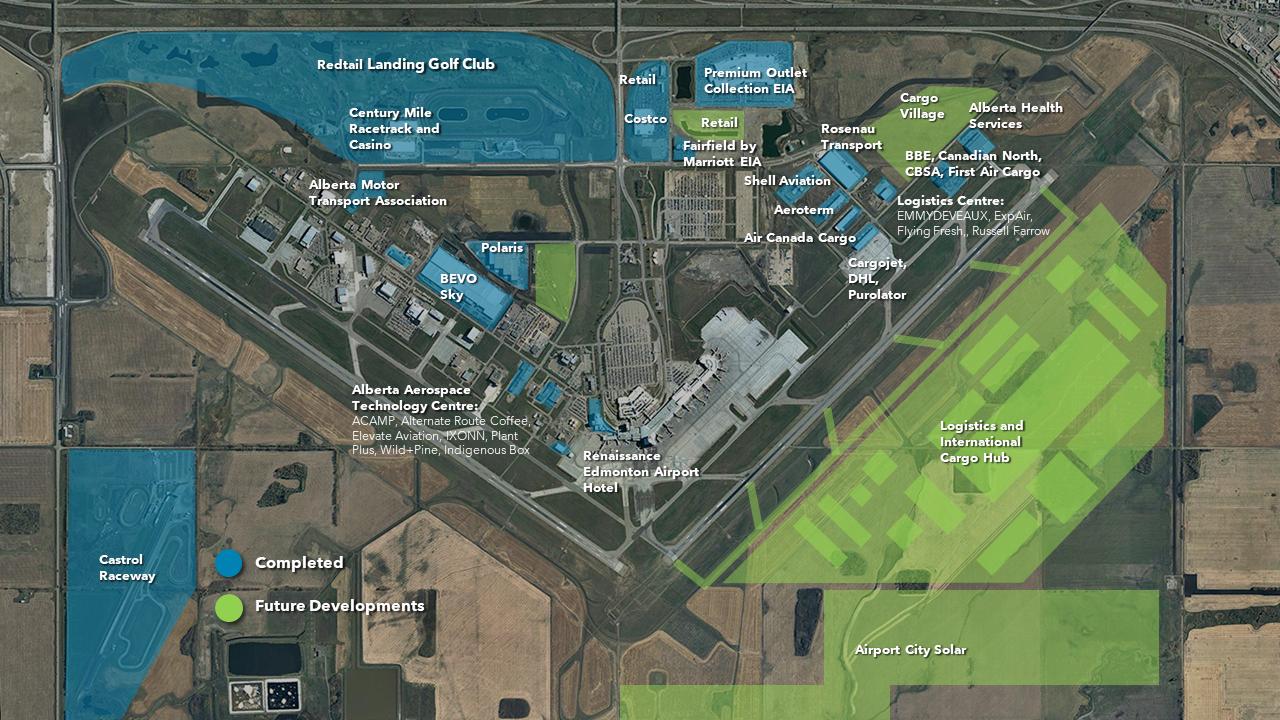
stands 15th out of 132 countries. The nation acknowledges the need to further nurture its innovation ecosystem and has taken proactive measures to support startups and attract entrepreneurial talent. By combining infrastructure development with innovative initiatives, Canada strives to create an environment conducive to economic growth and sustainability.
To fully leverage the economic benefits of public infrastructure investments, Canadian jurisdictions are placing a stronger emphasis on site readiness. The availability of industrial sites that are under contractual control and have been vetted through a rigorous due diligence effort is crucial for attracting companies looking to establish factories and warehouses, contributing to job creation and economic prosperity. Communities across the country are proactively engaged in efforts to identify and advance the readiness of high-quality industrial properties, ensuring Canada remains an attractive destination for businesses.
The province of Ontario, for instance, launched the Job Site Challenge two years ago, aiming to identify the most market-ready mega sites in the province. The initiative has already yielded success, as demonstrated by the upcoming establishment of Umicore’s US$1.2 billion manufacturing facility for cathode active battery materials (CAM) and their precursor materials (pCAM), and Volkswagen’s intentions to build its first E.V. battery plant (gigafactory) outside of Europe with an initial US$5.6 billion investment. Other Canadian communities, including the city of metropolitan Edmonton, Alberta, are also actively engaged in identifying and improving the developmentreadiness of their industrial land to fuel further economic growth and development.
Canada, with its abundance of natural resources, has long relied on its energy sector to drive economic growth. However, the nation is not immune to the challenges posed by global energy transition and decarbonization efforts. As countries worldwide shift toward renewable energy sources, Canada recognizes the need to adapt its power sector to meet evolving demands and environmental targets.
Quebec, known for its hydroelectric and low-cost renewable energy, has experienced a surge in demand, particularly in data centers, battery supply chain companies, and electric vehicle adoption. To ensure a lasting and stable energy supply, Quebec’s government has pledged to be more selective in approving power-intensive projects, carefully balancing economic development objectives with environmental considerations. The commitment to maintaining a carbon-free energy mix might include exploring new nuclear power options.
On the other hand, Ontario has a long history of embracing large-scale nuclear power generation, building upon its existing infrastructure with recent reactor refurbishments. The province has also initiated predevelopment work for a new significant nuclear project, aiming to add 4,800 MW of power to the Bruce Nuclear Generating Station. Additionally, Ontario has launched the country’s first grid-scale Small Modular Reactor (SMR) program with four planned facilities. Supported by the Canada Infrastructure Bank, SMRs are also expected to be installed in other provinces, including Saskatchewan, New Brunswick, and Alberta. Furthermore, Alberta, renowned for its oil and gas industry, is pursuing renewable energy projects to assist with the decarbonization of its energy development.
While Canada has made significant strides in infrastructure development, its reputation for innovation is mixed and has room for improvement. The country has taken significant steps to foster an environment that encourages entrepreneurship and technological advancements. Government-funded programs, such as the federal Protein Industries Cluster and the Province of Saskatchewan’s Agtech Growth Fund, provide crucial support to startups and drive innovation in sectors like agriculture.
One recent and notable success story is Precision AI, a Saskatchewan-based startup that developed an AIpowered application to deploy pesticides accurately with drones. By leveraging artificial intelligence, Precision AI aims to reduce herbicide use by up to 95 percent while maintaining crop yields, benefiting both farmers and the environment. The innovative AI technology showcases the potential of public-funded programs in catalyzing change and driving advancements in agriculture, not only within Canada but also beyond its borders.
Complementary to this private-sector innovation, Transport Canada has also taken a proactive and inventive stance by submitting Beyond-Visual-Line-of-Sight (BVLOS) drone rules for approval in Canadian air space. Among the first of their kind globally, the drone regulations will allow low-risk operations beyond the visual line of sight. Such policy changes support the growth of the unmanned aviation sector and enable groundbreaking applications like AI-powered wildfire risk detection around critical infrastructure, which was developed by Spexi Geospatial in Vancouver, British Columbia.
Canada’s commitment to fostering innovation extends to its immigration policies. The proportion of immigrants in Canada — 23 percent of the total population — is the high-
est among G7 countries, according to Statistics Canada.3 Still, recognizing the importance of attracting global talent, the country has introduced three more measures to address its skills shortage by further opening its borders to skilled immigrants.
A newly launched Digital Nomad Strategy allows professionals to work remotely in Canada for up to six months, providing opportunities to explore employment options and potentially establish permanent residency. The Innovation Stream offers highly skilled individuals the opportunity to work in Canada for up to five years, supporting companies that contribute to the country’s innovation goals or operate in high-demand occupations. Additionally, a new H-1B Open Work Permit Program has been established to enable 10,000 H-1B visa holders already vetted by the U.S. immigration system to move to Canada, benefiting both the individuals and the Canadian economy. The time and place when Canada announced these initiatives was on-point: the renowned Collision Conference, a global tech summit hosted in Toronto. The conference used to be held in the U.S. before moving to Toronto, citing, among other things, visa restrictions in the U.S. affecting international speakers and attendees.4
Canada’s immigration initiatives are part of a larger, multi-year, multi-program federal effort to accelerate workfocused immigration, especially through an “Express Entry” program for skilled and experienced workers. In many cases, over the last several years (preceding and following
the pandemic), employers and employees have received approvals within 3-4 weeks to allow sought-after international talent into Canada. The federal government is not alone in its effort to address labor availability challenges in the country. At the provincial level, Invest Quebec, for example, has created a new workforce-dedicated team to better assist companies — already established or considering expanding in the province — with financial aid, training and upskilling programs, and recruitment solutions. Other provinces are similarly furthering and improving their talent growth efforts with apprenticeships, co-ops, and other training initiatives.
Foreign direct investment (FDI) to Canada continued to grow at a healthy pace in 2022,5 surpassing a 10-year average by nearly 14 percent, despite declining from a recordsetting 2021. Moreover, Canada was the seventh leading global destination for FDI last year.6 Despite domestic challenges, Canada’s commitment to infrastructure development, innovation, and talent development and attraction serves as a blueprint for sustained economic growth and environmental stewardship.
1 https://impact.economist.com/projects/infrastructure-for-good/barometer/ canada/
2 https://www.globalinnovationindex.org/gii-2022-report
3 https://www150.statcan.gc.ca/n1/daily-quotidien/221026/dq221026a-eng.htm
4 https://collisionconf.com/blog/how-we-got-here
5 https://fdi2022.investcanada.ca/
6 https://unctad.org/publication/world-investment-report-2023
FDI into Canada continued its strong trajectory in 2022, outspacing the 10-year average by 13.6%
In the recent years, Canada has put forward several fiscal measures aimed to compete with other jurisdictions, but primarily with the United States in terms of business tax credits, incentives, and other ESG (environmental, social and governance) tax services. For private and public stakeholders around the world, ESG is evolving as one of the key criteria for investment projects.
The new federal and provincial budgets are ESG-oriented. Since 2016, Invest in Canada continues to promote spending initiatives for clean technology following key objectives such as:
• Creation of long-term economic growth
• Supporting the resilience of communities and transition to a clean-growth economy
• Building social inclusion and socio-economic outcomes for all Canadians
More than $1 trillion in grant monies and tax incentives have been awarded by numerous governments worldwide, mostly in North America and Europe, to support ESGrelated capital and operating investments. Canada’s new budget contains CDN$43 billion in new spending initiatives, with CDN$20.9 dedicated to clean technology initiatives, over five years.
Mexico, with its active participation in COP 15, has paved the way for new programs. Initiatives such as tax benefits and financing programs encouraging the use of renewable energy technologies, participation in research and technological development projects, and a focus on employability and social inclusion have recently been adopted and are now part of Mexican income tax law and programs.
In the United States, on July 14, 2023, as part of a US$20 billion program, the Biden administration launched the $14 billion National Clean Investment Fund (NCIF) competition, which will provide grants to support nationwide clean initiatives through financing.
The Canadian government, regulatory bodies, and businesses have been increasingly prioritizing ESG factors to address sustainability, social responsibility, and good governance practices. In fact, the Canadian federal government has implemented regulations and policies to promote ESG considerations. For example, the Pan-Canadian Framework on Clean Growth and Climate Change outlines Canada’s commitment to reduce greenhouse gas emissions and transition to a low-carbon economy. Additionally, the Canadian government has introduced mandatory climate-related financial disclosure requirements for organizations.
The new measures focus heavily on offering refundable tax credits, a form of assistance that can be the equivalent of a grant in the right circumstances. Importantly, the new policies focus on capitalized investments in production itself rather than research and development efforts. What does this mean for manufacturers?
An example of how this priority shift can benefit manufacturers is through the Clean Technology Manufacturing Tax Credit. This tax credit allows manufacturers to deduct 30 percent of their investments in the manufacturing of green technologies such as EVs and energy-generation
Through their ESG-oriented policies, Canada’s federal and provincial governments are working to position themselves as an attractive investment destination for businesses seeking sustainable long-term growth.
equipment. This also applies to processing and extracting activities in the mining industry, as long as the minerals being mined are strategic critical minerals.


Clean hydrogen production projects are eligible for a refundable tax credit equivalent to between 15 percent to 40 percent of the investment. As this technology is still embryonic, this should help higher-risk projects to take shape and attract innovative projects.
The Clean Electricity Investment Tax Credit, originally announced in 2022, is a refundable credit worth 15 percent of an investment in clean energy generation, which includes nuclear power. This credit is also available to provincial crown corporations, which produce large amounts of power in Canada, sometimes as monopolies.


While actively promoting sustainable finance initiatives, Infrastructure Canada has also emphasized the importance of ESG factors in corporate development strategies. For example, in Quebec, a recent partnership between Hydro-



Québec and Investissement Québec has streamlined the electricity demand for expansion projects and business attraction. Any consumption greater than 5MW needs to be analyzed by Hydro-Quebec as to the connection capabilities and then approved by the Minister of Economy, Innovation and Energy. This new application, along with the requested project information, focuses on detailed pieces of information regarding ESG, hydrogen consumption levels, and greenhouse gas emissions as well.


Most large companies have established ESG programs and have reported their success. Small- to medium-sized businesses, however, have more difficulty adapting to the new requirements and acclimating their operations and tactics. Canadian companies are increasingly recognizing the importance of ESG reporting and disclosure. Some
Canadian associations have put together guidelines to increase transparency of information on their climate-related information. This commitment and corporate accountability are based on the Principals for Responsible Investment from the United Nations committing to incorporating ESG factors into their investment processes.
In Canada, corporate stakeholders’ ESG priorities are inclining toward climate, nature and biodiversity, inclusion and diversity, and Indigenous reconciliation. According to PwC’s Canadian ESG Reporting insights,1 there is a serious shift of attention toward ESG consideration. Numerous Canadian companies have implemented sustainability initiatives to address ESG factors with a focus on reducing environmental impacts, enhancing social responsibility, and improving corporate governance practices. Many companies have set specific targets related to greenhouse gas emissions reductions, renewable energy use, waste management, diversity and inclusion, and community engagement.
In the recent years, concrete actions have been put forward, and Canada has been investing in green technologies and fostering innovation to support the transition to a lowcarbon economy. There are initiatives and funding programs to support research and development of clean technologies, renewable energy, and sustainable practices across various sectors. However, companies remain unprepared and limited in their capabilities to effectively integrate ESG across their organizations. In addition, unaware of the important funding opportunities offered at the federal and provincial levels, Canadian companies do not take full advantage of the support available through incentives and support services.
As site selectors, the trend that we have witnessed as it pertains to ESG and government programs in Canada and elsewhere is the emphasis and accountability of ESG within the application process for government programs, which plays an important role in the approval process. One recent example is the federal support to Volkswagen in their project to build a battery manufacturing plant in Ontario. This contribution falls within Canada’s new ESG-driven priorities and its strategy to attract new projects, and clearly
competes with the United States’ aggressive programs. Over and above incentives, within the site selection process, companies are doing a deeper dive into ESG in their location choices/ Indeed, ESG is driving far more than government programs.
From a community perspective, this ESG priority shift has greatly impacted local policies and has trickled down to local initiatives such as the restructuring of business parks with ESG and sustainable development objectives and considerations. By encouraging industrial densification and meeting energy-efficiency criteria, industrial parks are developing new ways to implement ESG considerations in their industrial and commercial development projects. These new parks include bicycle paths, day-care centers, wetlands preservation, and follow strict environmental regulations such as carbon-neutral buildings. The real estate industry is also focused on ESG and the effect on location decisions by the private sector.
ESG is a growing priority among governments and corporations. It plays an important role in the investment attraction dynamic. However, one of the main challenges facing companies revolves around the disclosure of ESG data. Businesses in Canada need to consider innovative financial structures and how economic incentives can help defray the implementation costs as they make large investments in ESG throughout their portfolios. Transparency and corporate accountability will shed light on a company’s ESG activities and help further develop a more ESG-driven culture.
Overall, Canada has recognized the significance of ESG considerations in driving sustainable development, investment attraction, and ensuring long-term economic stability. Its fiscal policies play a key role to assist companies and jurisdictions in actively working toward integrating ESG factors into their operations, policies, and decision-making processes. Through ESG, Canada is working to position itself as an attractive investment destination for companies and investors seeking sustainable, responsible, and longterm investment opportunities.
1 https://www.pwc.com/ca/en/today-s-issues/environmental-social-andgovernance/esg-reporting-insights.html
Canada has been investing in green technologies and fostering innovation to support the transition to a low-carbon economy.
An ongoing industrial revolution fueled by digitalization, decarbonization, and electrification has changed the conversation on energy and prompted a race to the grid in many parts of the country. Fasttracked industrial projects are now the norm as project teams navigate increased construction costs, inflationary financing, supply chain challenges, and increased competition. Speed is currency. Yet, hastily engineered timelines and ravenous electricity specifications can come at a cost, including the elimination of good sites and project delays. When siting a new manufacturing facility, best-guessing load requirements can often lead to delayed schedules and potential production setbacks. Electrical equipment lead time, engineering backlogs, as well as transmission and capacity constraints make underestimating load requirements in today’s environment particularly unforgiving.
Less obvious, however, are the opportunity costs associated with overestimating your load schedule. Inflated power demands have the potential to pull the reigns on your speed-to-market strategy by discounting infrastructure and locations that can scale with your needs. Similarly, overly aggressive load schedules and service delivery timelines eliminate otherwise viable locations prematurely in the site selection process.
One other, perhaps less considered, impact of overestimating electric loads is the potentially conflicting effect that such practices can have on the host utility’s decarbonization efforts. New generation goes through a multiyear load forecasting process. If that process is front-end loaded with artificially large loads, generation investments can be skewed, resulting in potentially escalated costs and higher carbon content.

Accuracy, not conservative estimates, should be prioritized at the outset of the project by first collecting a list of the expected electrical loads of the facility including mechanical equipment involved in production, as well as secondary loads such as HVAC and other utility systems. For many industries, this may require project teams to build load schedules for different investment and operating scenarios. These schedules will serve as the basis for sizing the transformers that will ultimately need to be secured by your power company, along with the switchgear the end user will need for the facility.
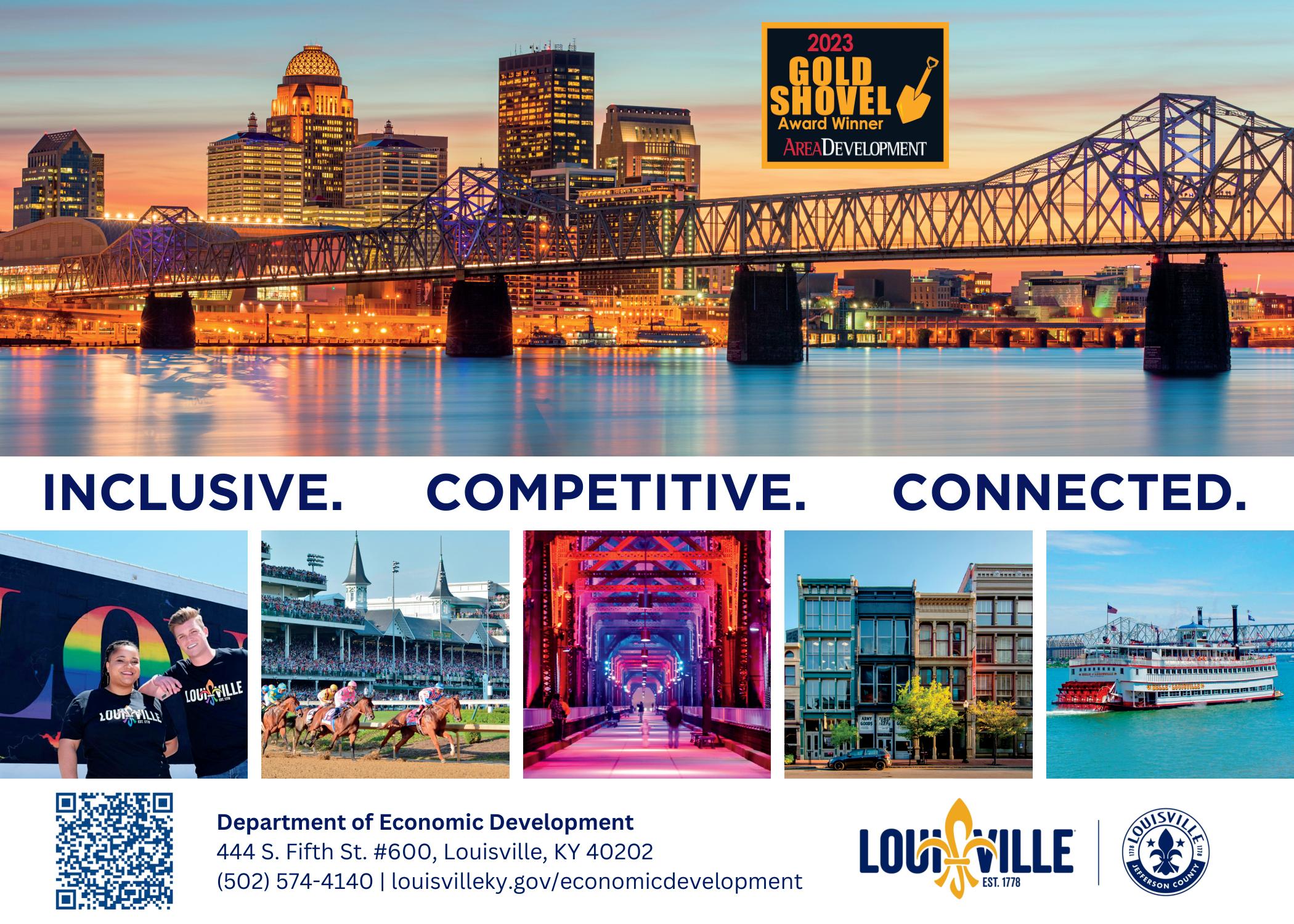
While it’s common for electric utilities to be asked to confirm an 18-month service delivery in the early stages of site selection, the reality is that only carefully design-engineered electrical loads will stand the chance of traversing today’s headwinds to meet these timeframes. Just a few years ago, this might not have been the case. A great site combined with a not yet blindsided supply chain stood a real chance. Today, however, lead times
for equipment are broadsiding the development community. Transformers across most voltage classes are still up more than 300 percent from their 2020 lead times, some taking 36 months or more from order to delivery. Switchgear is being quoted up to 75 weeks, with lead times getting longer. Wire and cable, panel boards, circuit breakers, and other electrical supplies are still experiencing record demand as growth industries such as data centers and energy storage manufacturers double down on long-term procurement strategies to meet customer obligations. For much of this equipment, it will be years before supply chains begin to stabilize.
Wyatt Earp, a gunslinger, lawman and gambler of the American West was quoted as saying, “Fast is fine, but accuracy is everything.” When it comes to electric service delivery, early, transparent, and frequent project communication with utility providers wins the day. Do not let overly eager electricity demands and construction schedules slow the draw on your next site.
Inflated power demands have the potential to pull the reigns on your speed-tomarket strategy.

High energy prices and bureaucracy at home, geopolitical tensions, and supply chain demands are among the factors spurring European companies to expand or relocate operations to the United States.
By Michael Johnson and Sebastian Meis, Shareholders, Baker DonelsonDue to record-high energy prices and economic instability in Europe, many European manufacturers are looking to the U.S. market for relief and are considering shifting production to the states. To seize this opportunity and attract foreign direct investment (FDI) for U.S. sites, it is essential to understand the reasons behind this trend and the challenges European companies face when relocating.
For over a decade, European companies have been eyeing manufacturing in the U.S. Recent developments induced more and more European companies to plan on expanding their production in U.S. facilities or to relocate their manufacturing to the U.S. altogether — especially for products requiring energyintensive manufacturing.
Between 2014 and 2020, European FDI in the U.S. increased by over 40 percent, rising to $3.19 trillion in 2021. For instance, 93 percent of German companies plan to grow their U.S. investments in the next three years, with construction, infrastructure, and industrial manufacturing industries leading the charge, according to the German American Chambers of Commerce.
Some of the European companies planning to open U.S. facilities or increase investment at existing locations include Europe’s largest steelmaker, ArcelorMittal, which announced it was cutting production at two German plants after its Texas plant exceeded expectations. While Tesla is pausing its plan to make battery cells in Germany, Volkswagen and Danish jewelry company Pandora announced U.S. expansions. OCI, a chemical company based in Amsterdam, is also expanding its Texas ammonia plant with an investment in the “high hundreds of millions,” and Swedish battery maker Northvolt is considering pursuing its expansion in North America before doing so in Germany.
This growth trend continues. A survey of the German Chamber of Commerce and Industry (DIHK) revealed that every 10th company is planning to relocate production from Germany abroad.
By shifting production abroad, European manufacturers are seeking to mitigate risks and costs in an unstable environment. These risks and costs stem from various factors, including the cost of energy, economic and political instability, increasing bureaucracy, infrastructure, and taxes.
1. Record-High Energy Prices — In recent years, Europe has been confronted with a historic increase in energy prices. The rise started in 2021 in the wake of the COVID-19 pandemic and growing international demand. Climate conditions and the vanished Russian natural gas supplies from European markets following Russian’s unlawful invasion of Ukraine have had an aggravating effect. While the climb in import prices impacted both producer and consumer prices, domestic industrial producers, in particular, suffered from skyrocketing prices.
2. Geopolitical Tensions — While comparatively high energy costs are a driving factor in relocation decisions — making European products less competitive — the head of the Innovation and International Competition Research Center at the Kiel Institute for the World Economy (IfW), Dirk Dohse, has identified geopolitical tensions as another consideration. The war in Ukraine and associated economic sanctions against Russia, as well as Russian countersanctions, directly and indirectly impact European companies. Furthermore,
even three years after U.K.’s exit from the EU single market, Brexit still poses challenges for European companies.
3. Customer and Supply Chain Demand — The allocation of manufacturing plants and a stronger presence internationally minimizes risk for manufacturers and enables them to better respond to the demands of consumers and supply chain partners. CEO Tom Jenson of Norway-based FREYR says that, due to its battery plant in Georgia, “Customers value that we can provide products from multiple geographies.” Moving production to the states also reduces logistics expenses involved in transportation across continents. According to a survey of the German Chamber of Commerce and Industry (DIHK), German companies frequently name high freight and transport costs and supply bottlenecks, as well as a lack of transport options, as obstacles in their global supply.
4. Bureaucracy and Regulations — Existing bureaucracy and regulations provide further motivation for European manufacturers. Many companies in Europe criticize increased bureaucracy, including long licensing procedures for exports, making the U.S. and its comparatively fewer regulations a desirable relief.
5. Incentives from the U.S. Government — Other incentives drawing European companies to the U.S. are provided by the U.S. administration. Most notable is the Inflation Reduction Act (IRA) launched in August 2022 as a multibillion-dollar subsidy program to sustainably promote certain key industries in the states, providing about $369 billion worth of incentives to support green energy innovation, manufacturing, and usage. The legislation has raised competition issues for European companies and prompted many to explore utilizing the subsidies. The benefits of the IRA are, however, conditioned on using domestic products or manufacturing them in the U.S., requiring companies to thoroughly determine whether their product is eligible for the incentives.
With the advantages of the IRA incentives, the comparably stable economic situation, lower costs, and fewer regulations, European companies are clearly motivated to increase investment in the U.S. and build new U.S. production sites. To ultimately capitalize on this trend and increase FDI, the U.S. must understand and address the two major challenges that European companies face in the relocation process.
1. Workforce Issues — First, the existing workforce issues in the U.S. should be addressed by presenting companies considering relocation with a proactive response. In recent years, European companies have experienced more and more workforce challenges in the U.S. Depending on the desired qualification and the total number and timeframe of workers needed, they can be a significant concern for companies looking to move production to the U.S. According to the German American Chamber of Commerce, building a sustainable workforce pipeline remains the No. 1 challenge for German companies in the U.S. for the second year in a row, with 78 percent reporting difficulties in attracting skilled workers in the U.S.
Workforce issues can be addressed by launching education programs and reducing existing regulatory challenges. Recruiting and educating the workforce through a system of apprenticeship programs also involves understanding what skills are needed for the jobs in demand. Local and state governments can collaborate with outof-state businesses and institutions, like the German American Chamber of Commerce, to formulate training requirements that then make their way into community colleges. In addition, the legal framework must provide conditions to foster the expansion of educational programs among students and workers at all stages of their careers. Obstructive regulations hindering the recruitment of workers and restricting them from entering certain occupations, such as age requirements for apprenticeships, need to be reviewed and reformed.
The second important factor is to ramp up the knowledge of how foreign companies can take advantage of IRA subsidies and tax credits. The eligibility requirements are not easy for out-of-state companies to meet. In each instance, it is necessary to determine whether a company meets the requirements with the specific product. Local and state governments as well as site planning companies should provide guidance to out-of-state companies in this process.
The U.S. is uniquely positioned to take advantage of an influx of FDI by European manufacturers seeking relief from numerous challenges. With its robust infrastructure, skilled labor force, and access to a vast consumer market, the U.S. is an attractive destination for companies looking to diversify their production locations. To fully capitalize on this opportunity, we must be proactive in addressing the issues that can stand in the way of foreign companies shifting production to the U.S. and consider the incentives necessary to maintain a competitive edge.
Between 2014 and 2020, European FDI in the U.S. increased by over 40 percent, rising to $3.19 trillion in 2021.













































































































mail subscriptions stated on PS 3541: 21,136. In-county paid/requested mail subscriptions stated on PS 3541: 0. Sales through dealers and carriers, street vendors, counter sales, and other paid/requested distribution outside USPS: 0. Requested copies distributed by other mail classes through USPS: 0. Total paid/requested circulation: 21,136. Non-requested distribution: Outside county non-requested copies stated on PS 3541: 20,054. In-county non-requested copies stated on PS 3541: 0. Non-requested copies distributed
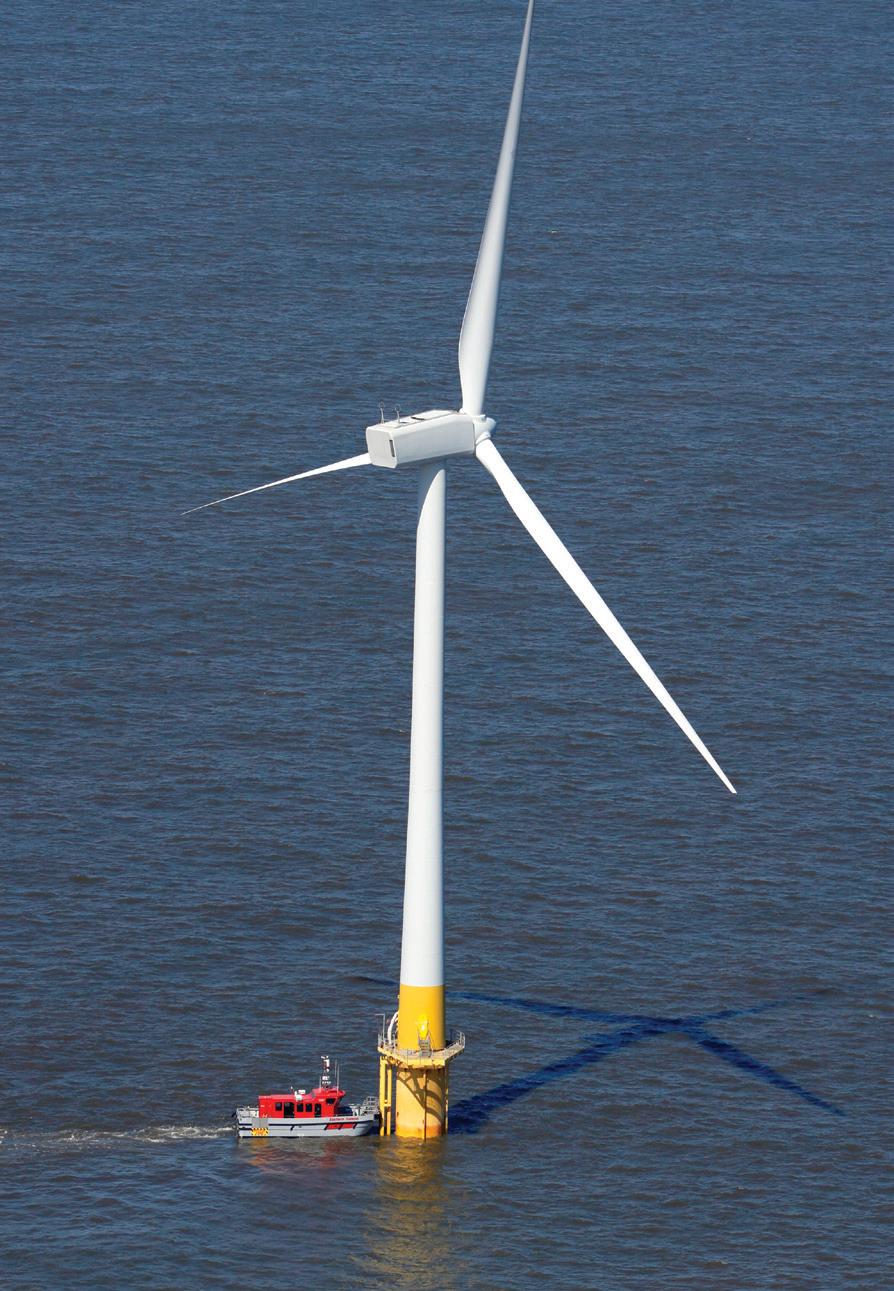






It’s not enough to o er employees a great place to work. Companies that choose New Jersey know they’re in a community where their families can thrive. This is where students shine in nationally ranked public schools. Where children play in safe playgrounds and clean parks. Where people of all ages feel secure enough to dream big and turn those dreams into reality. This is New Jersey. The perfect home for your company and your family.

thisisnewjersey.com


